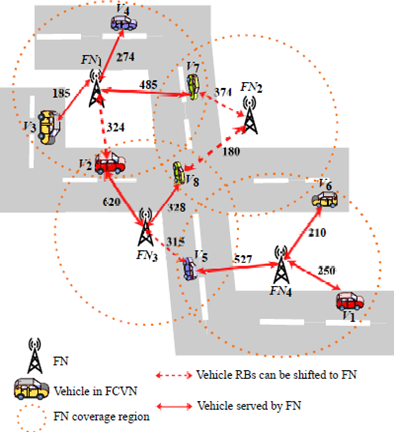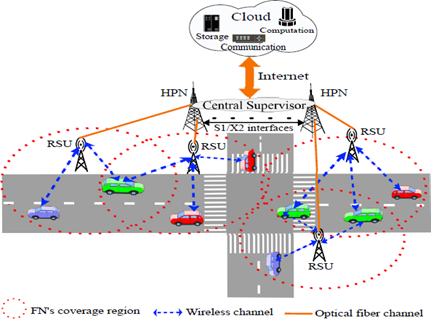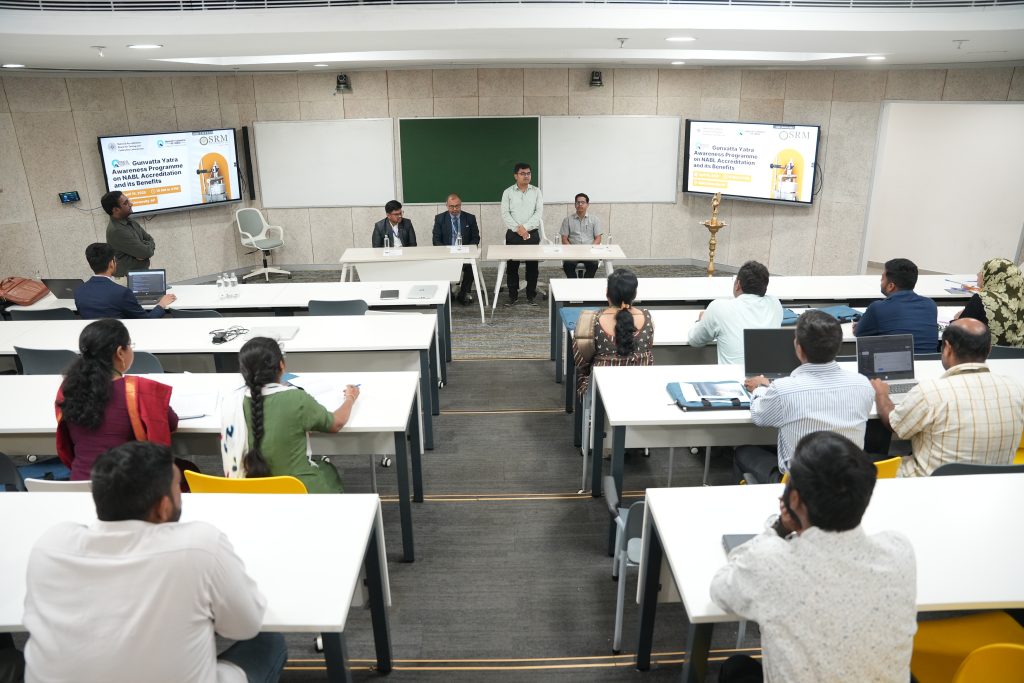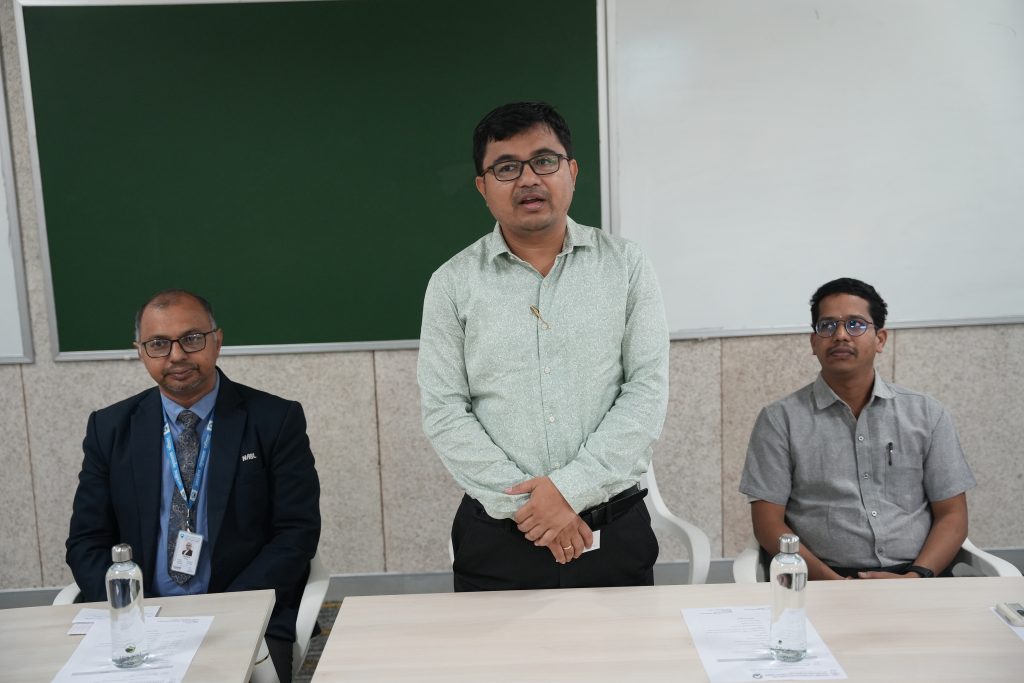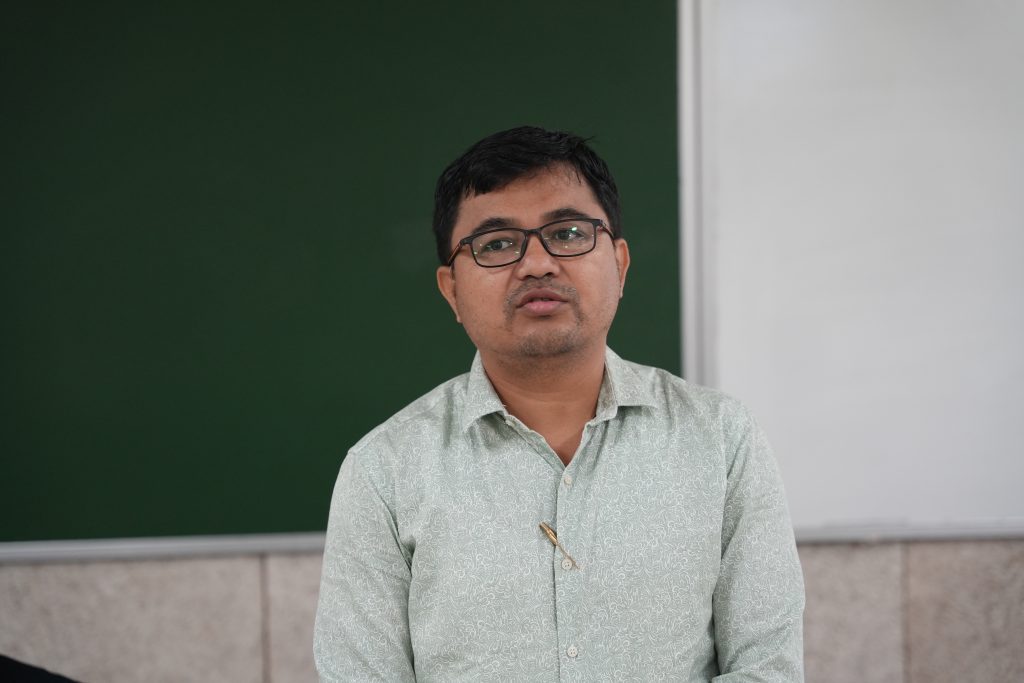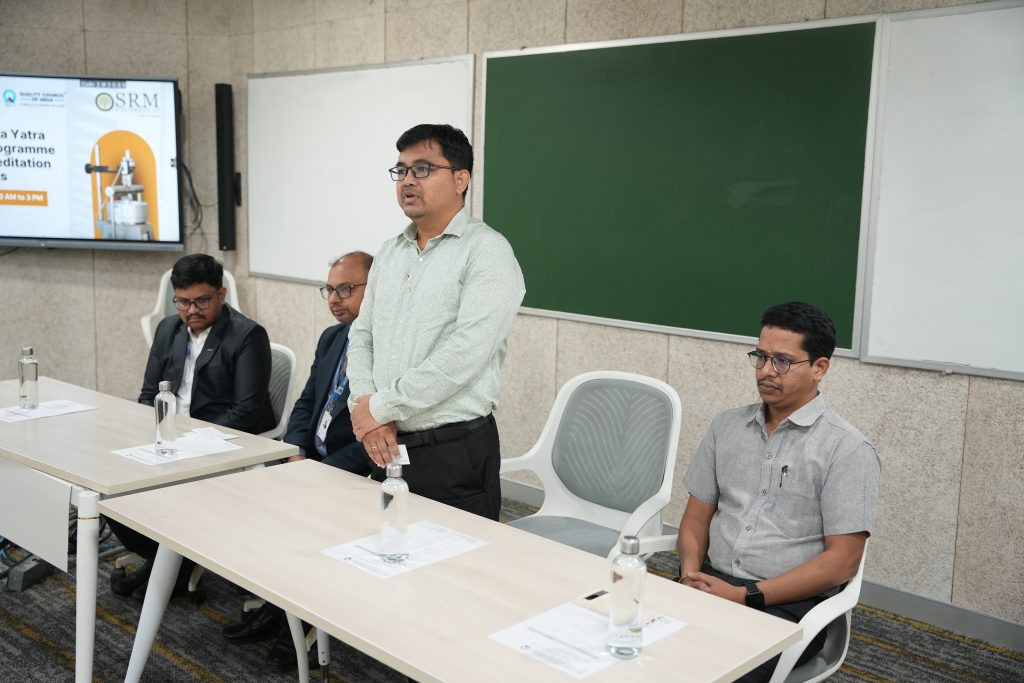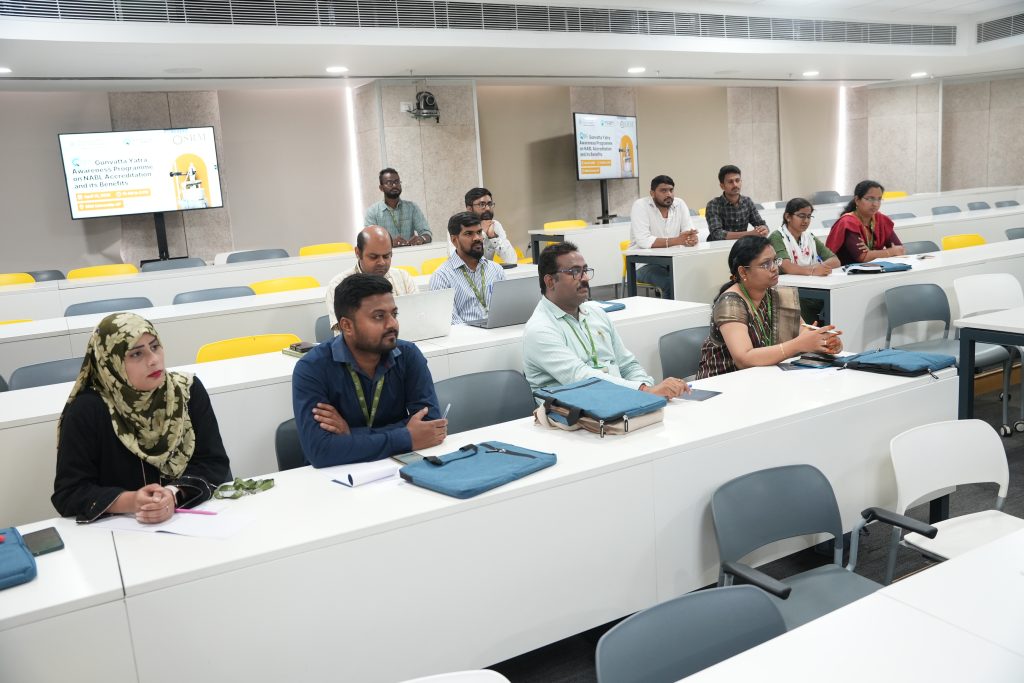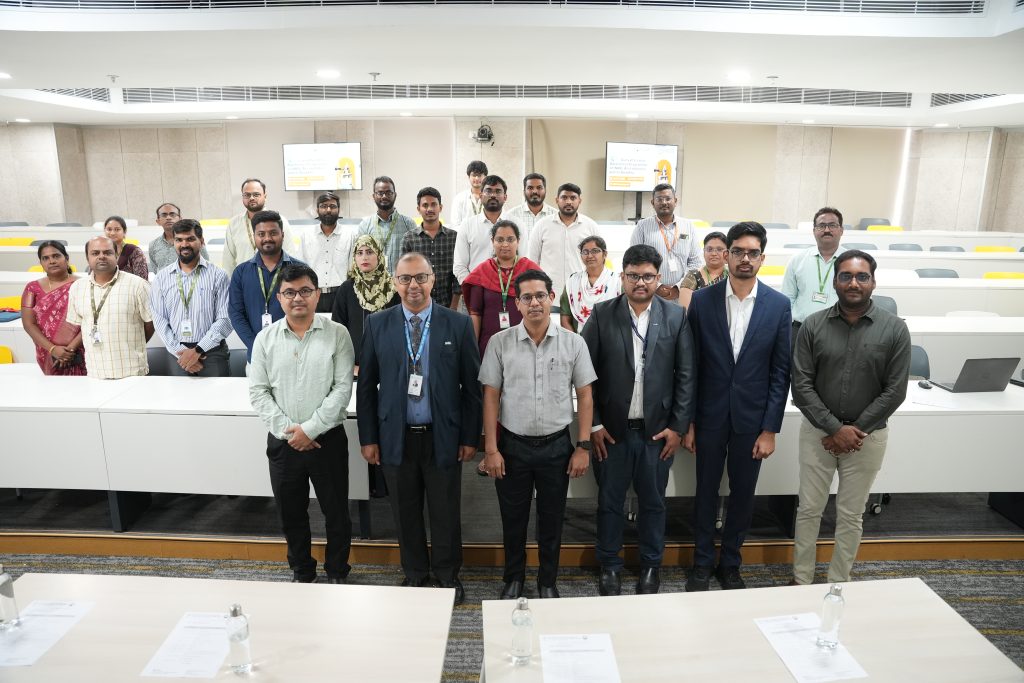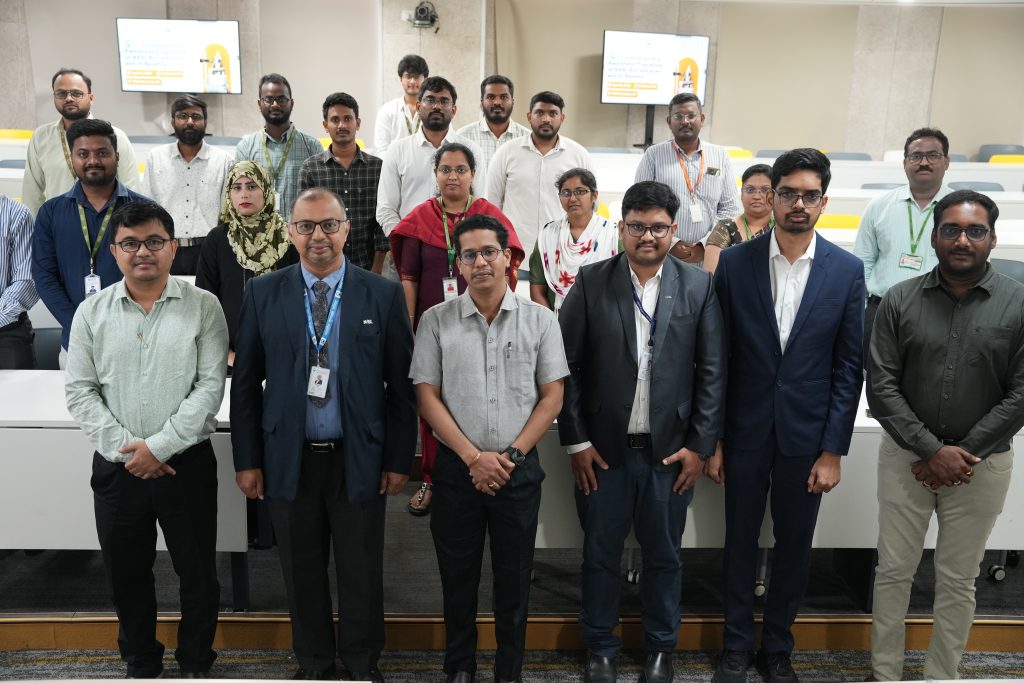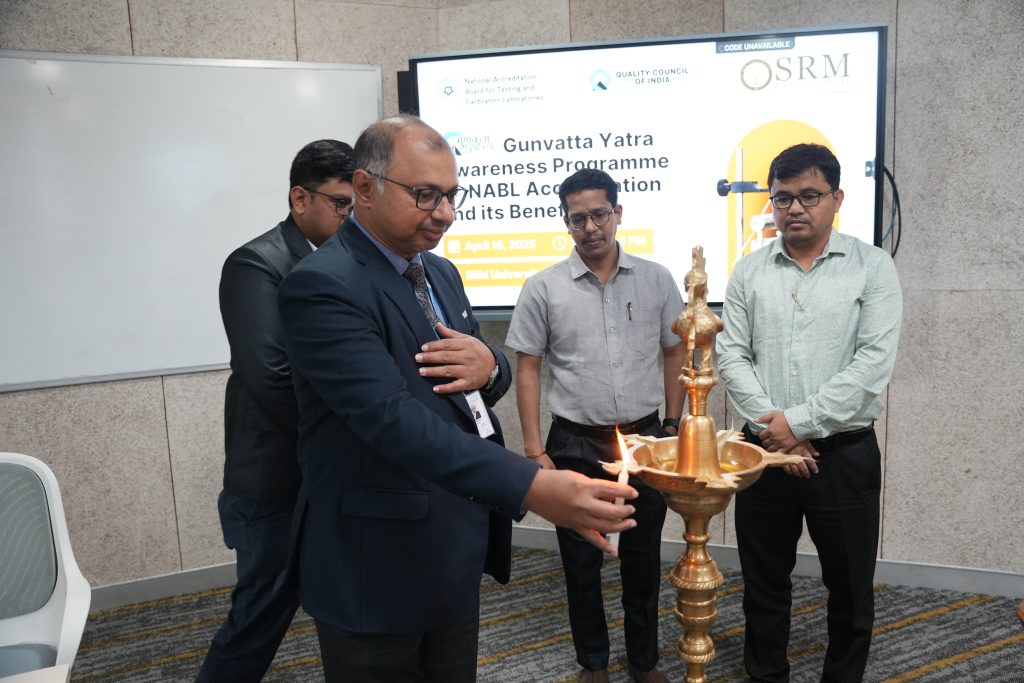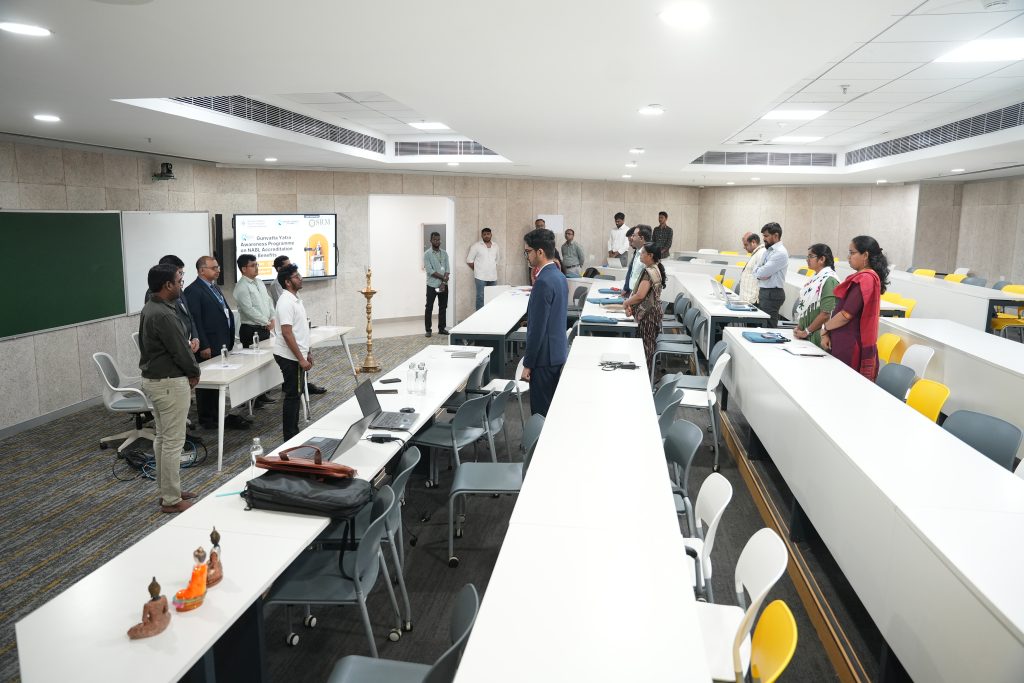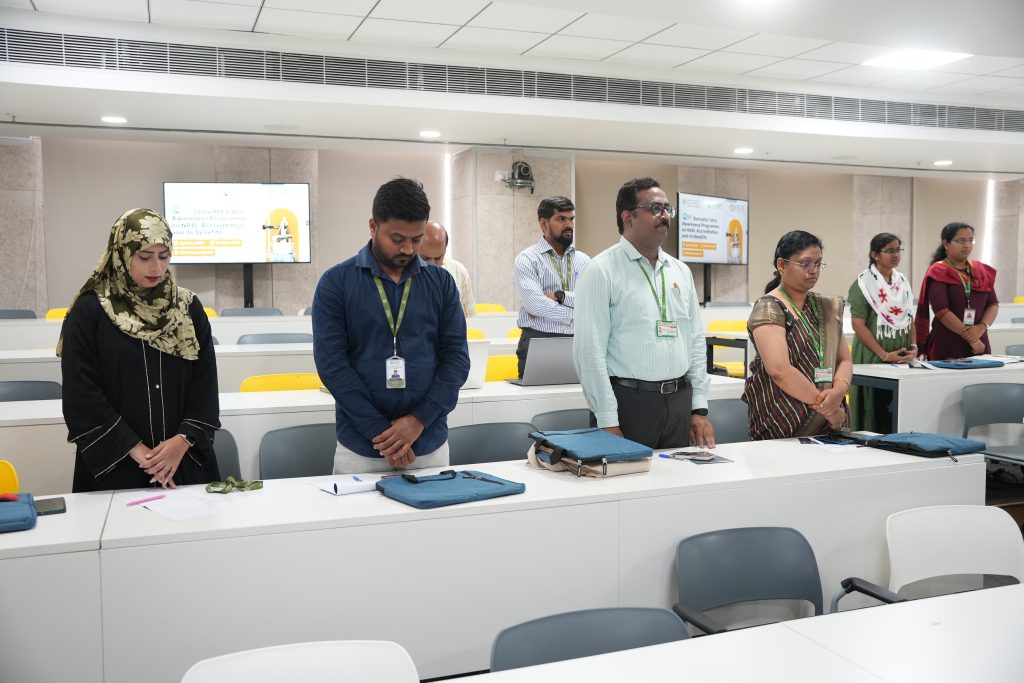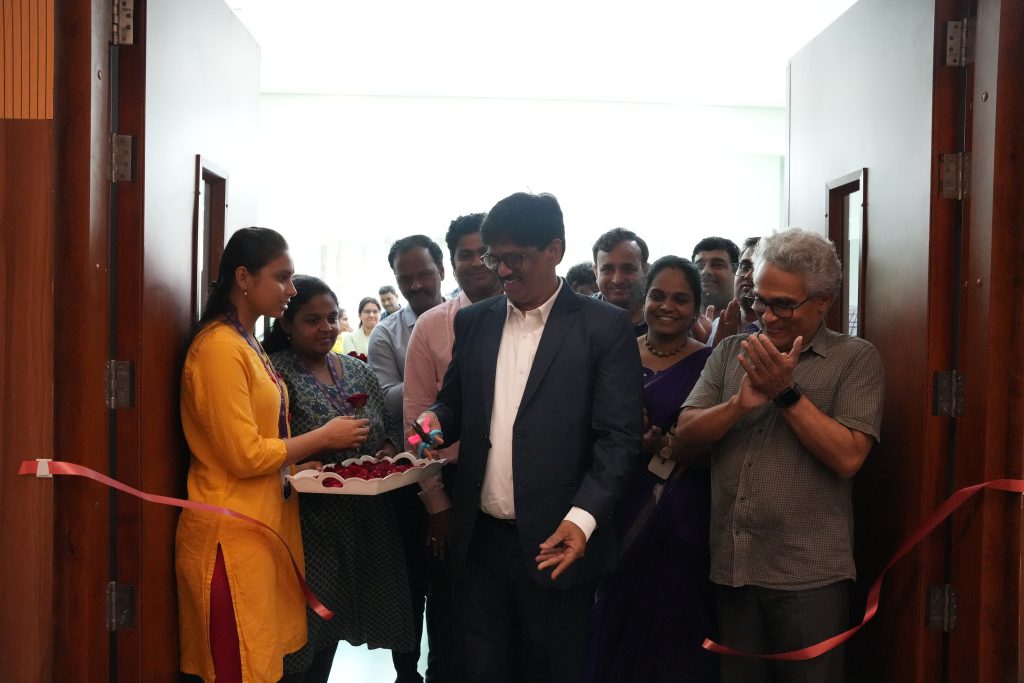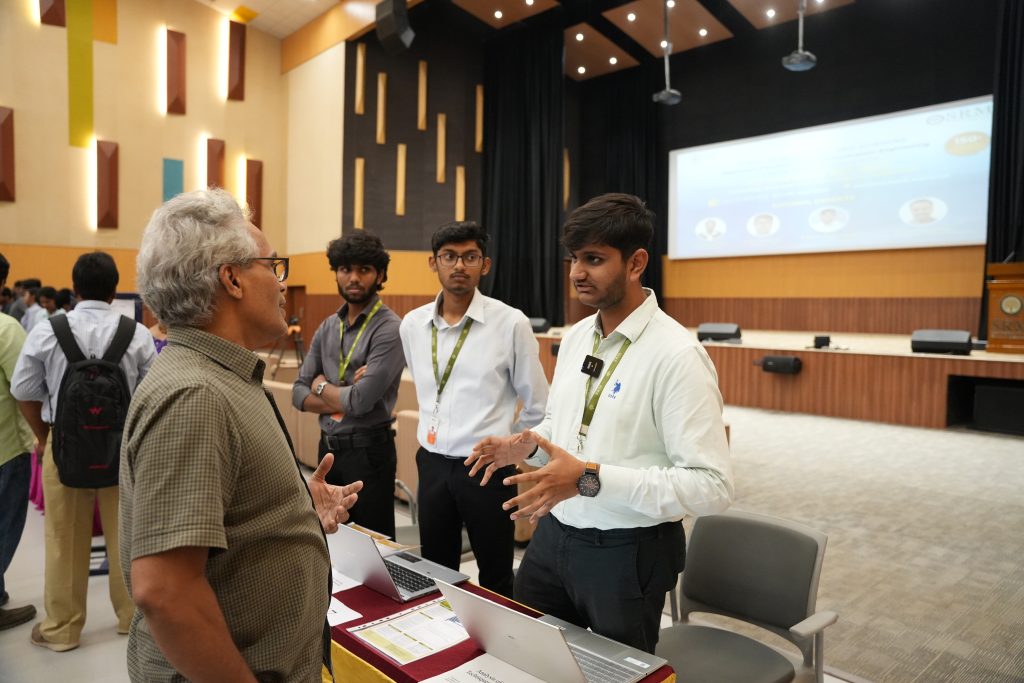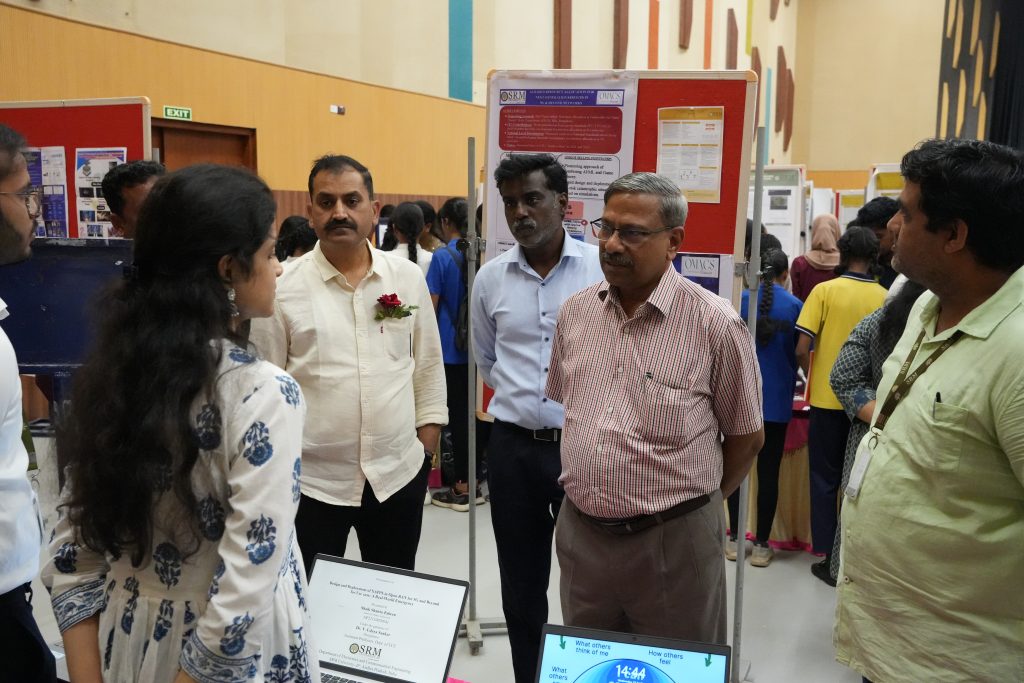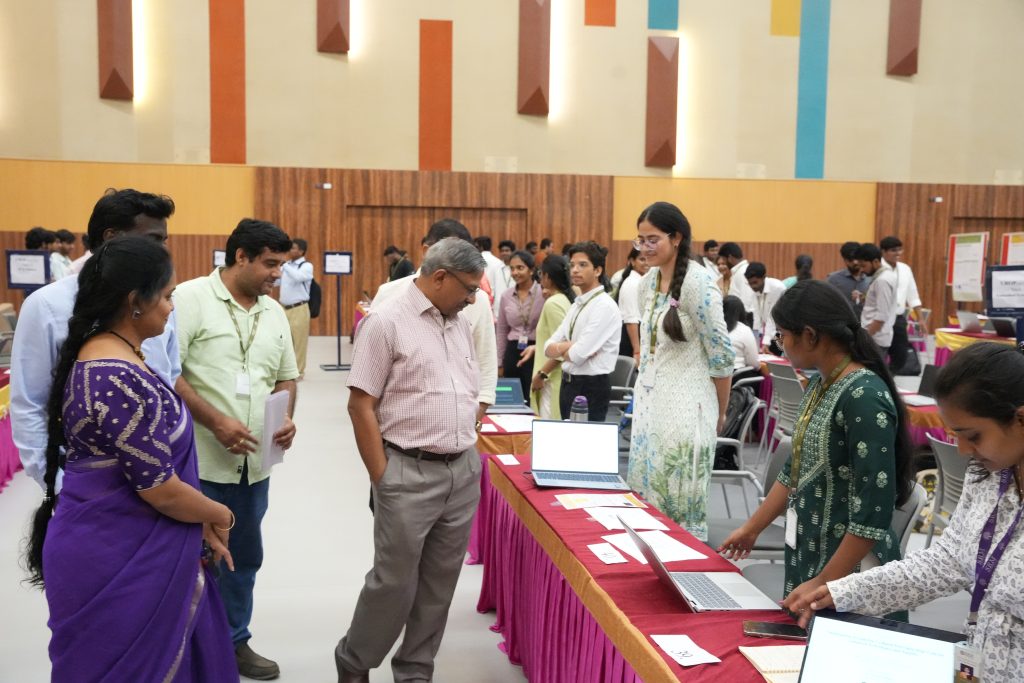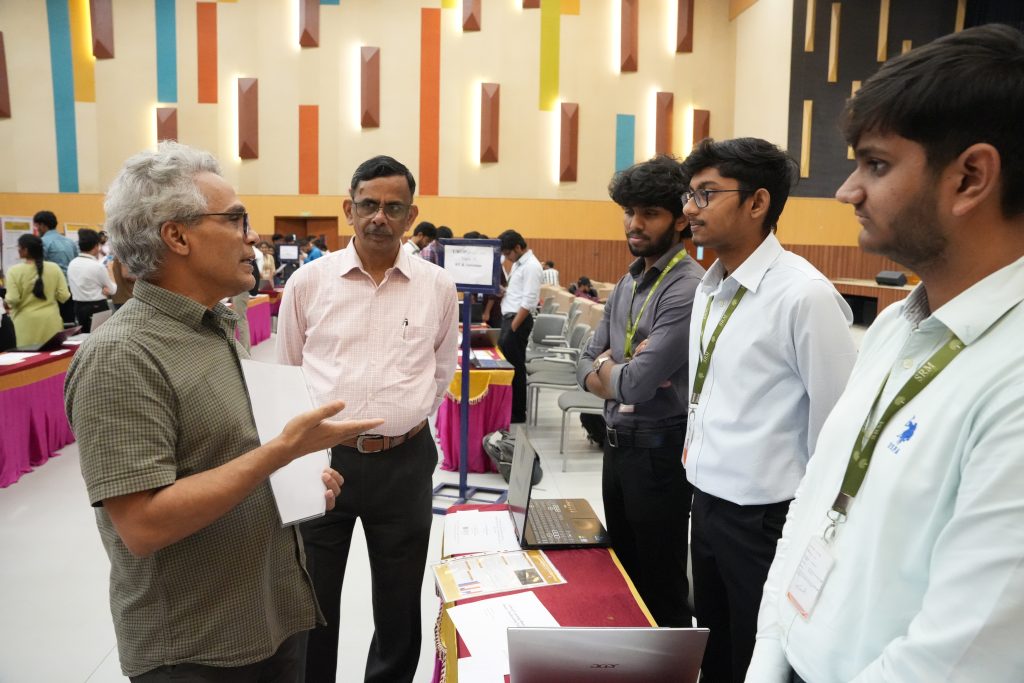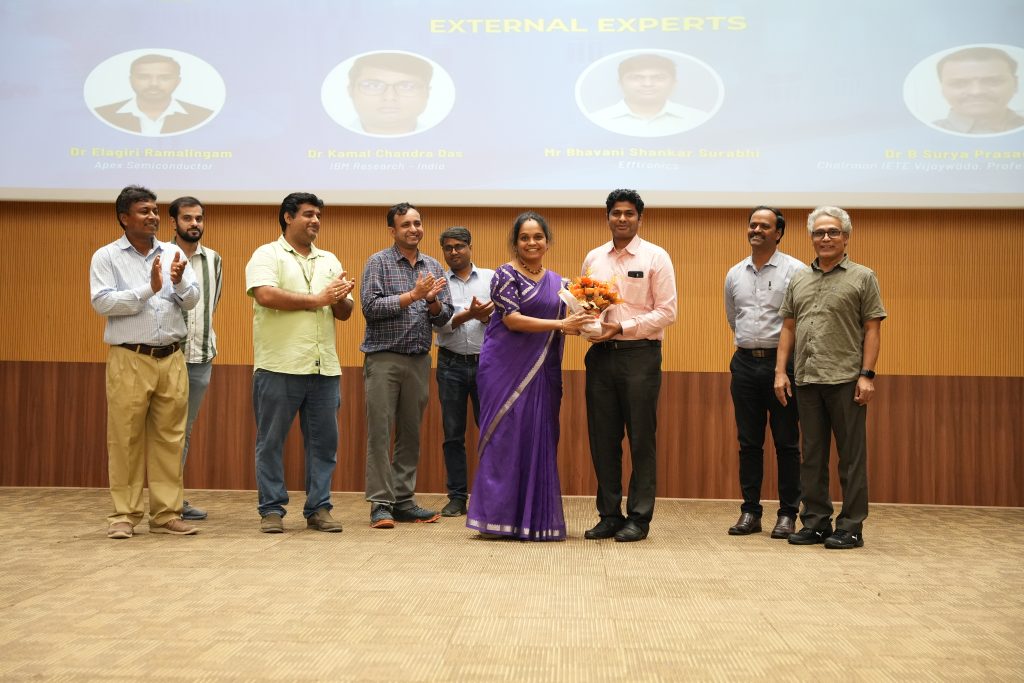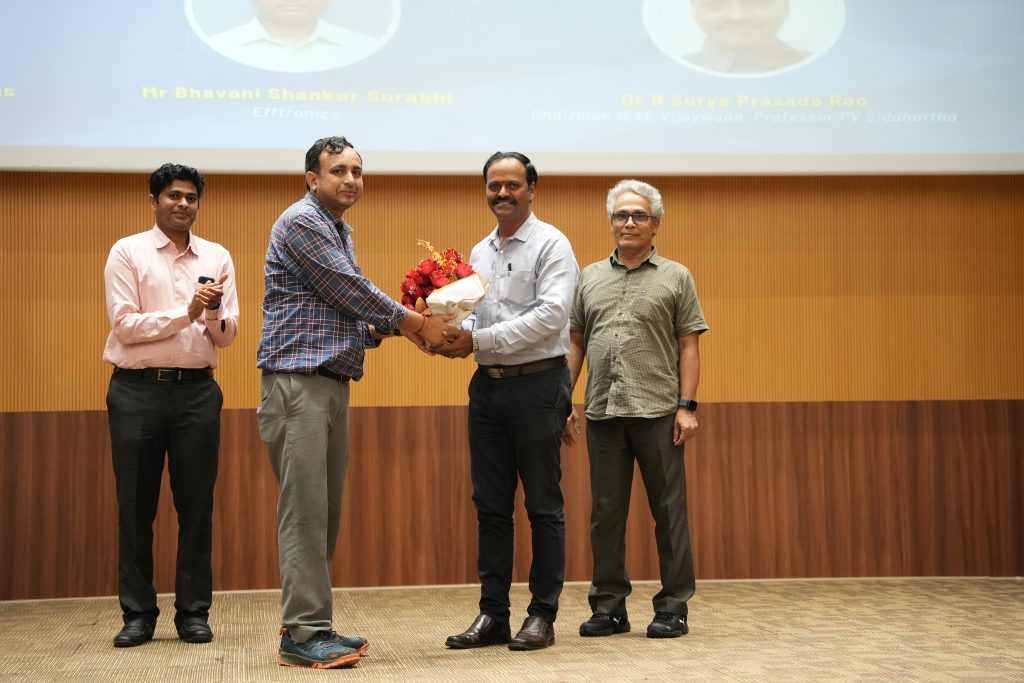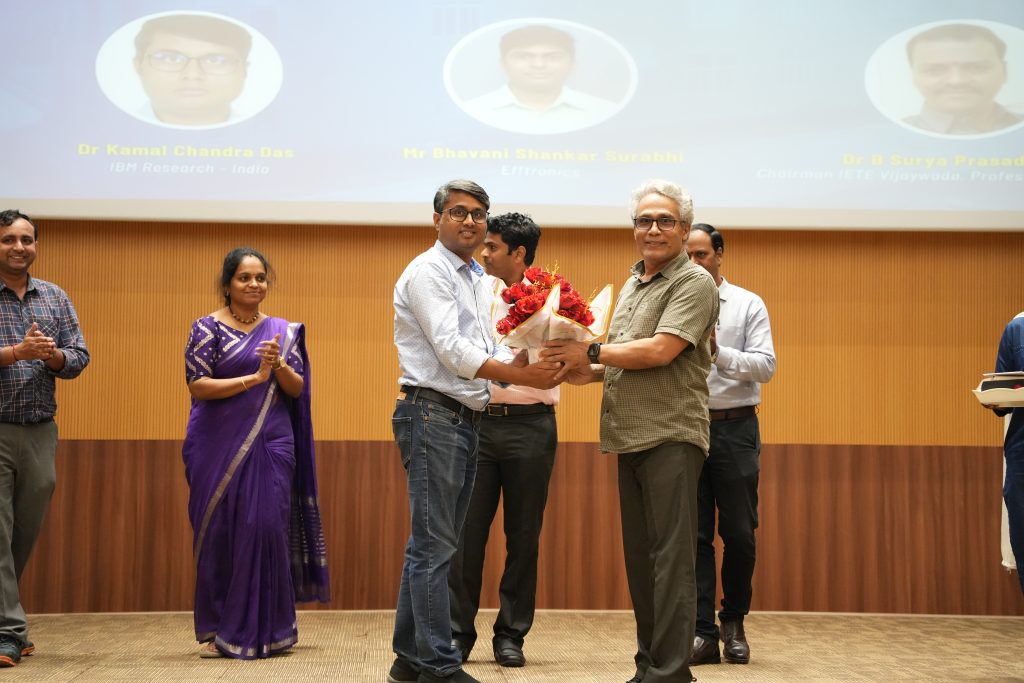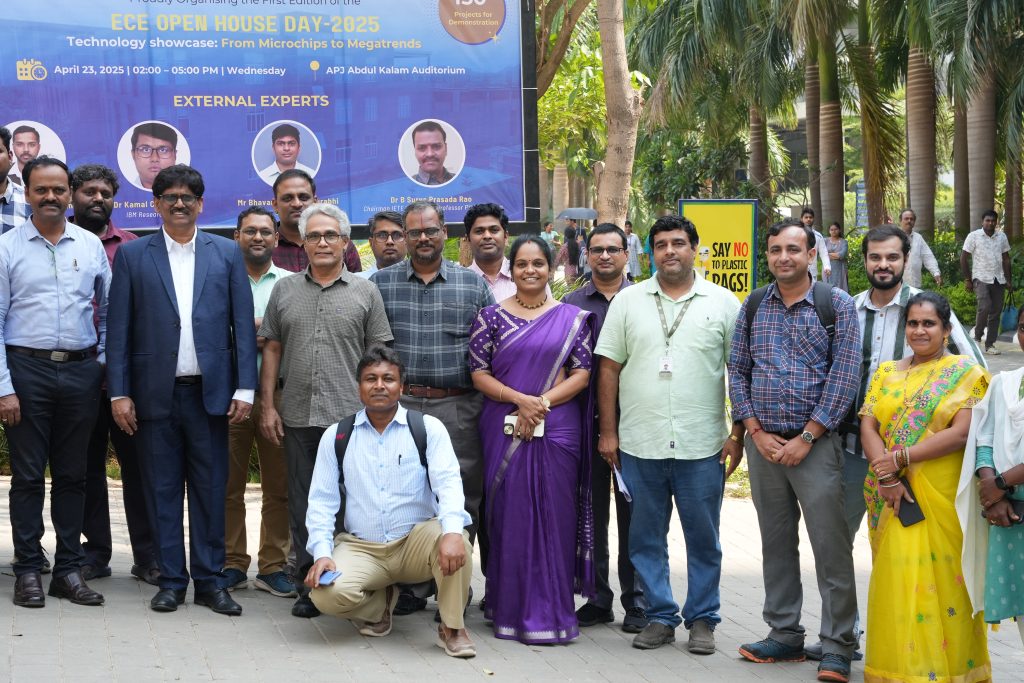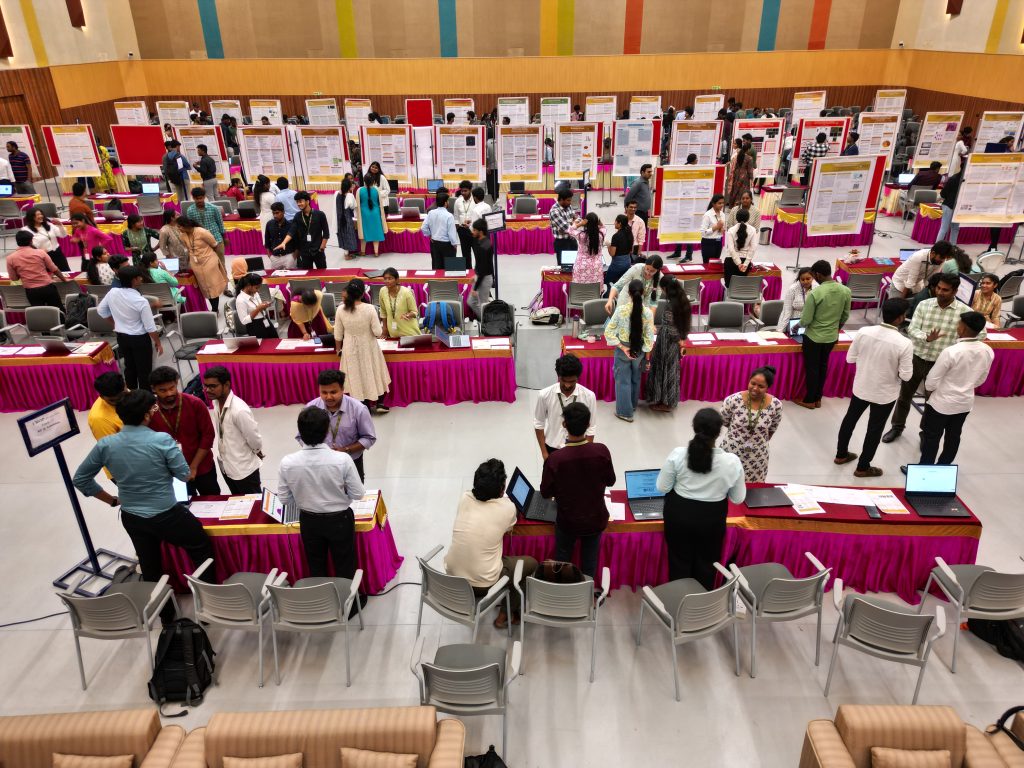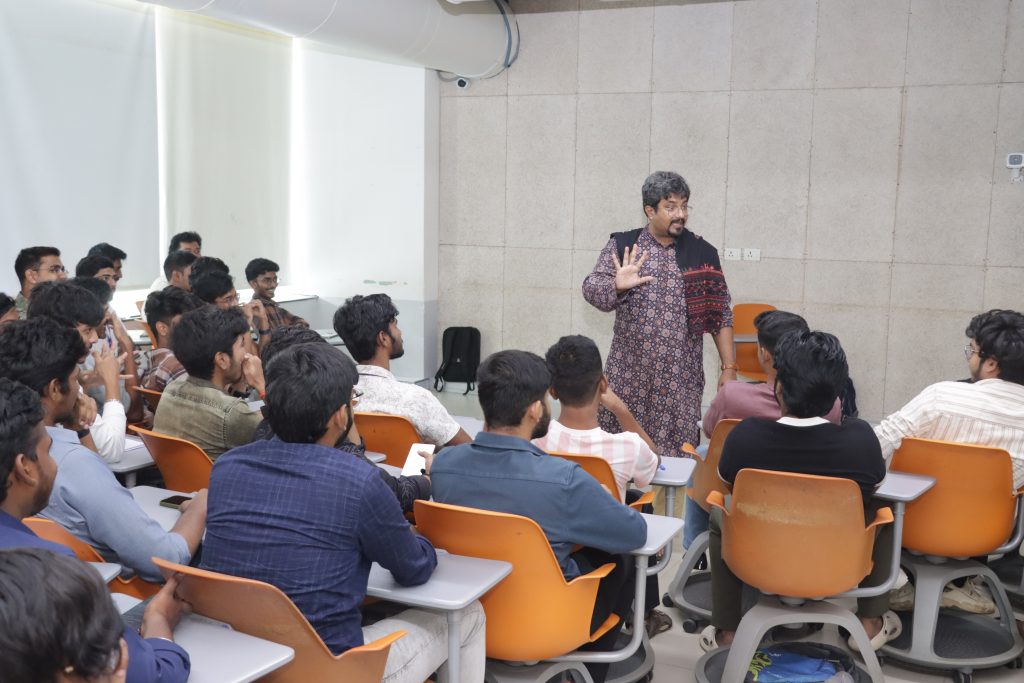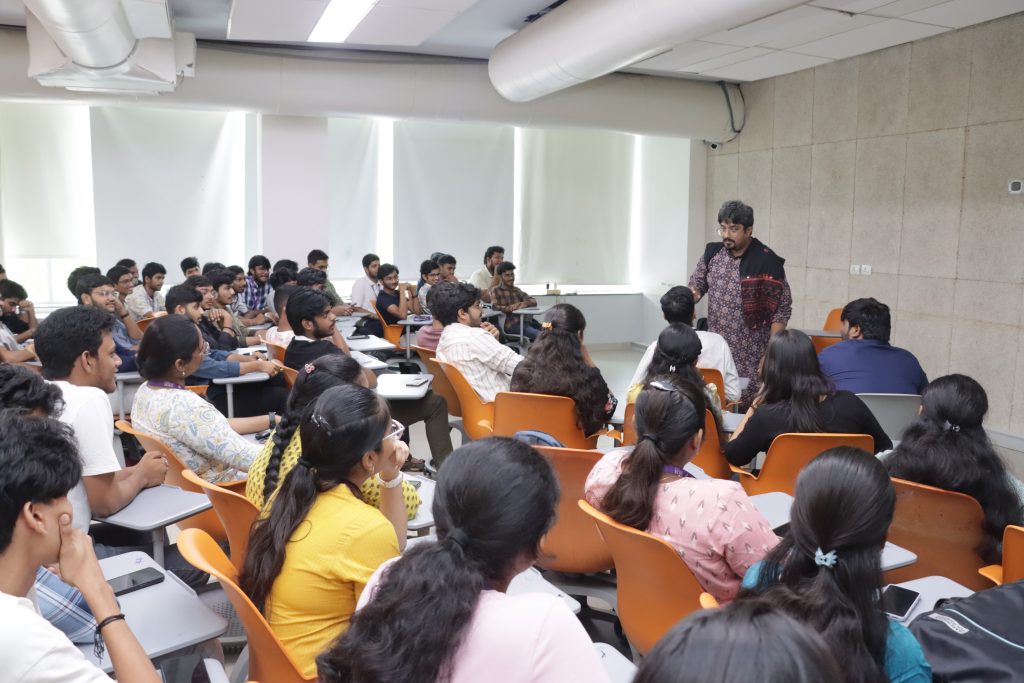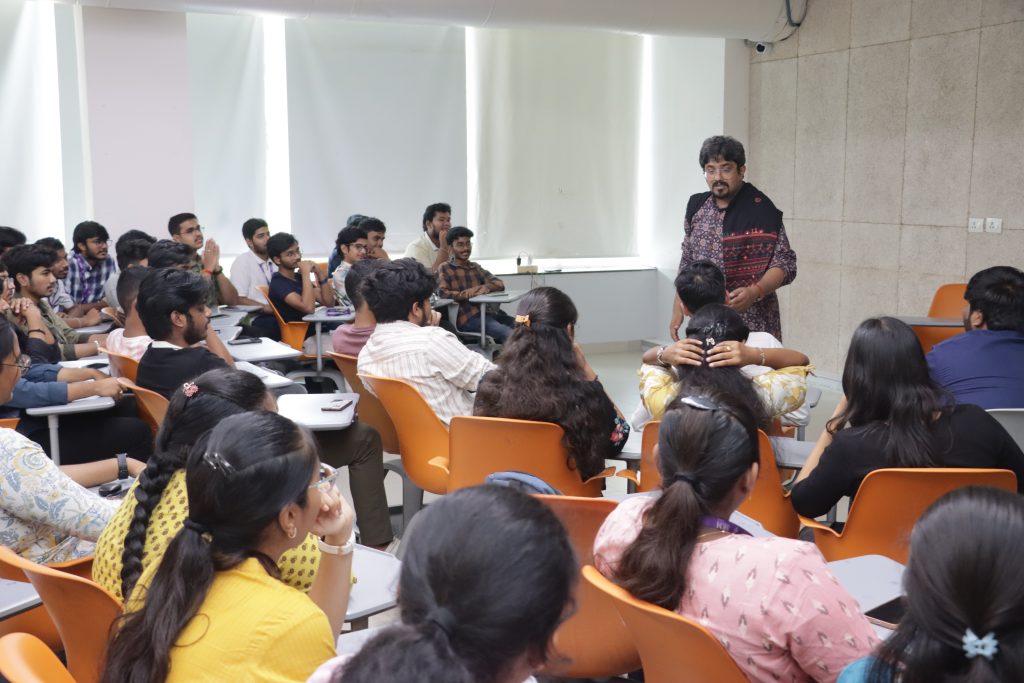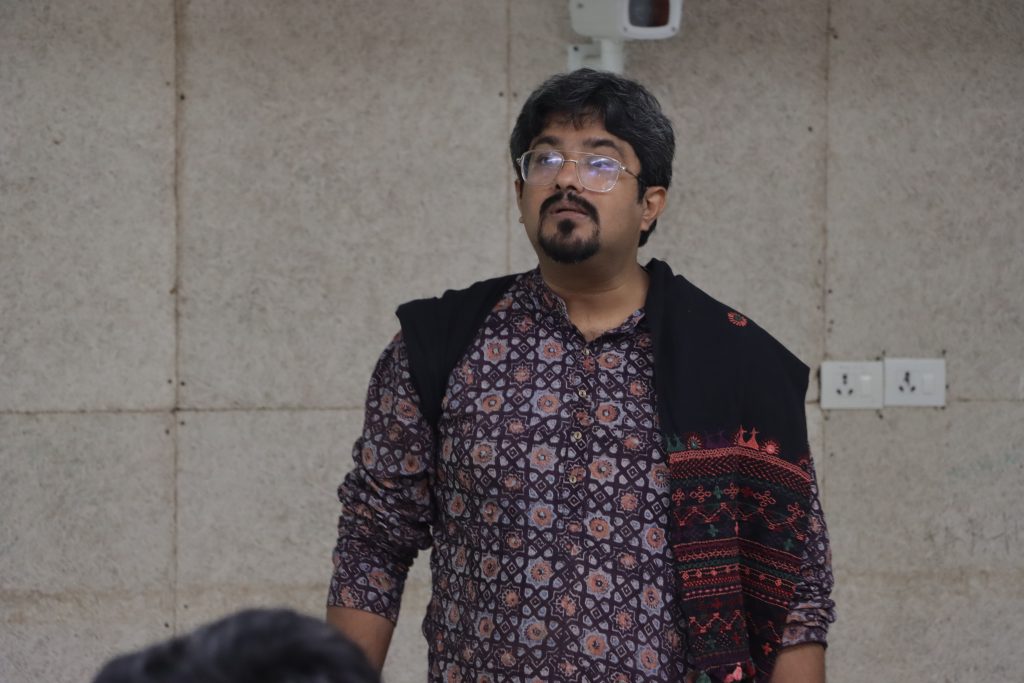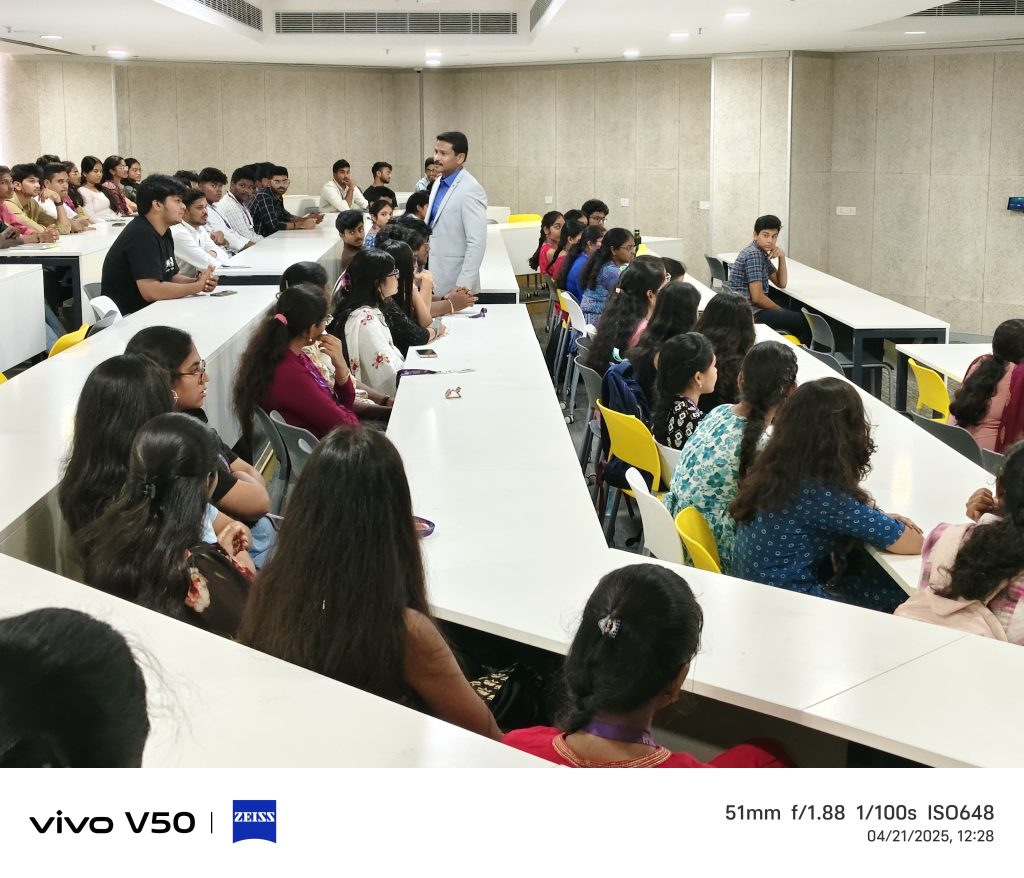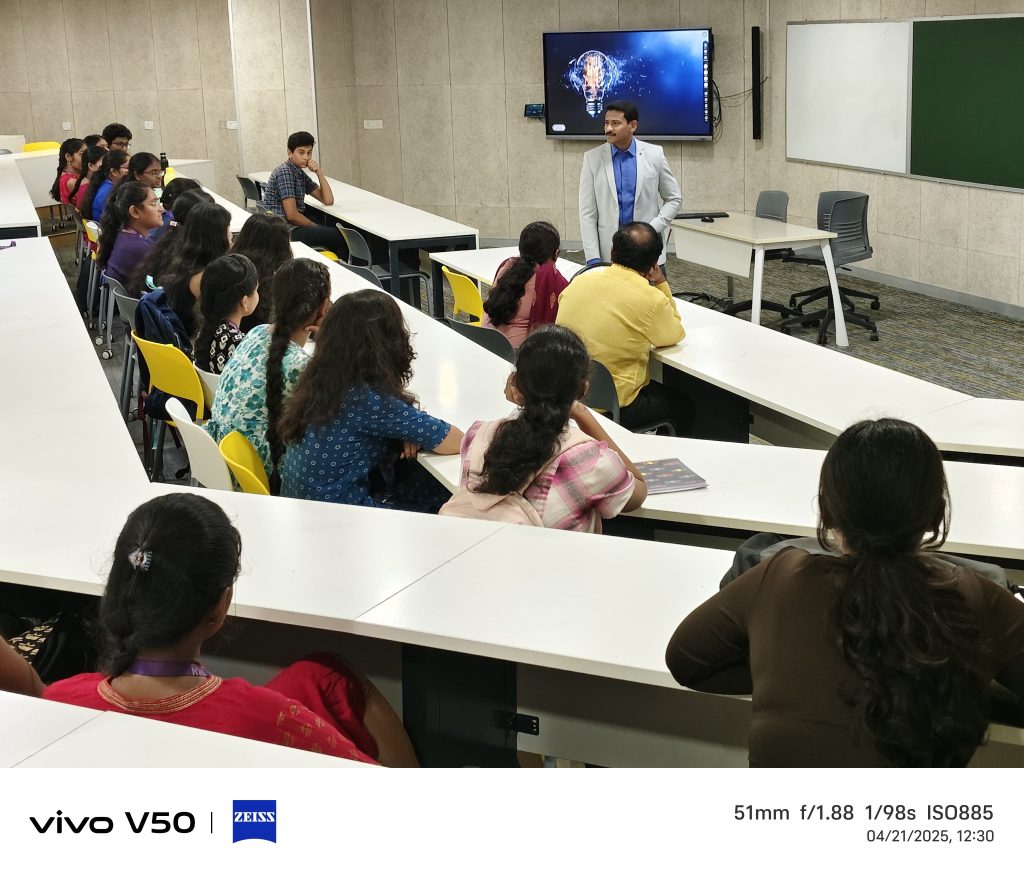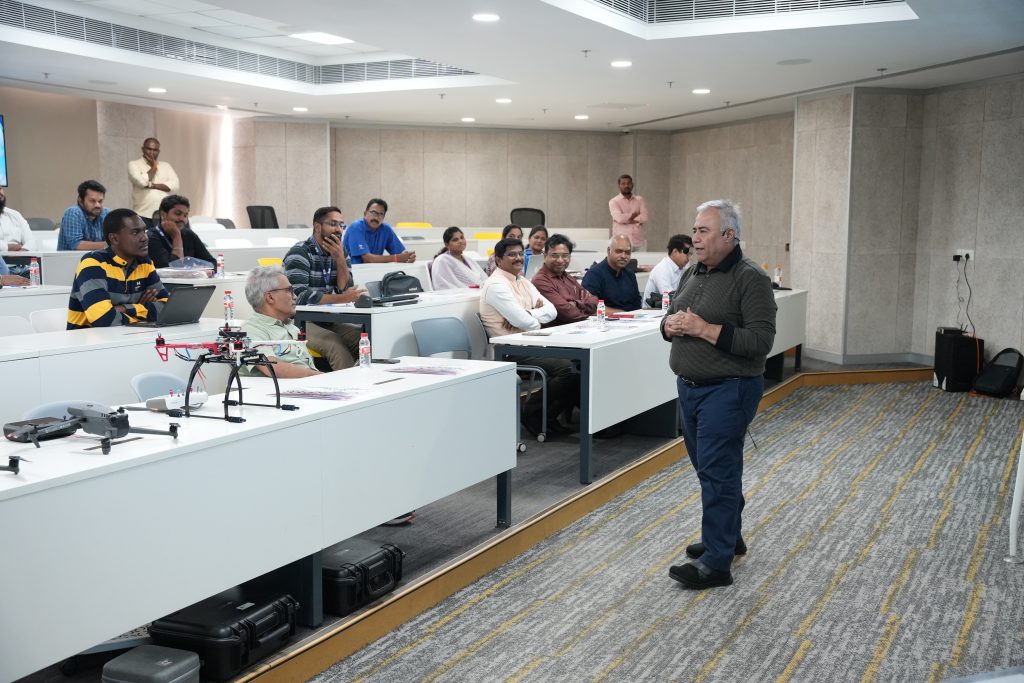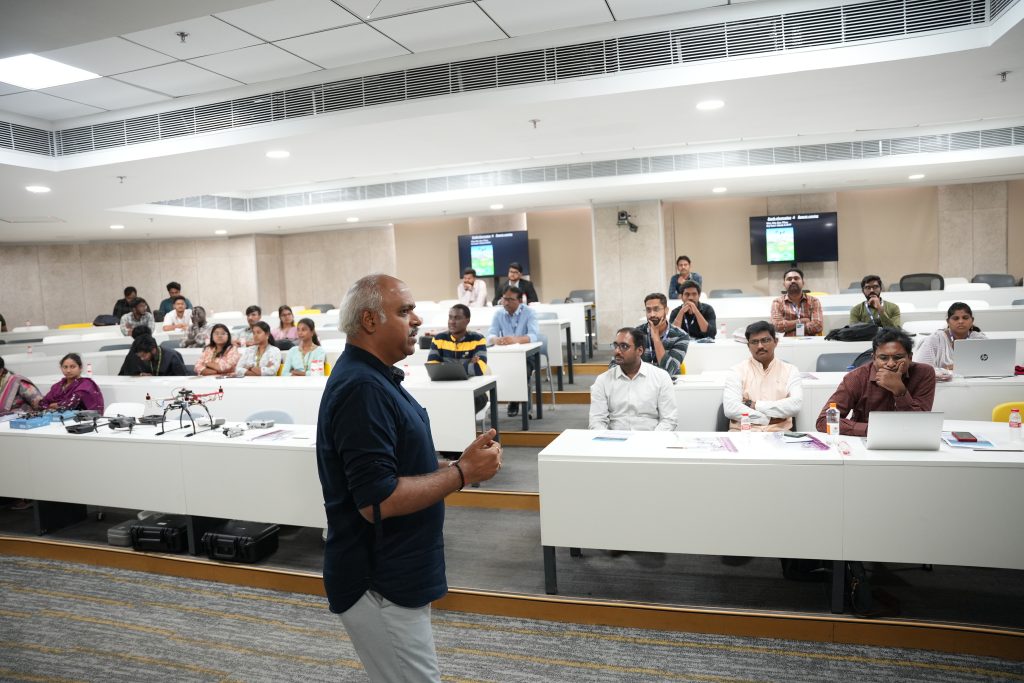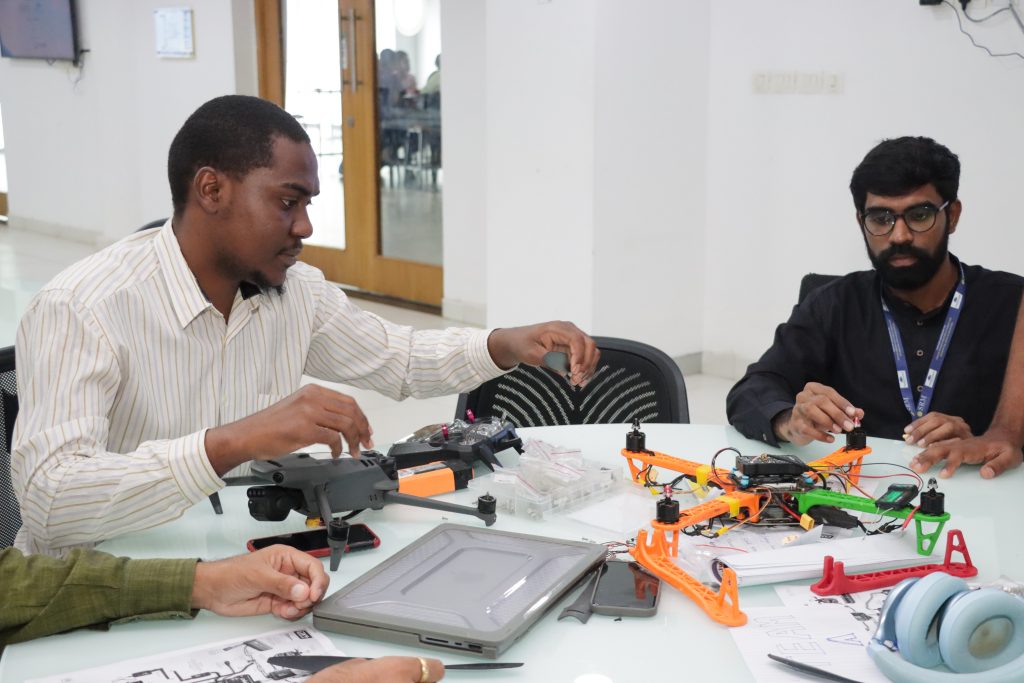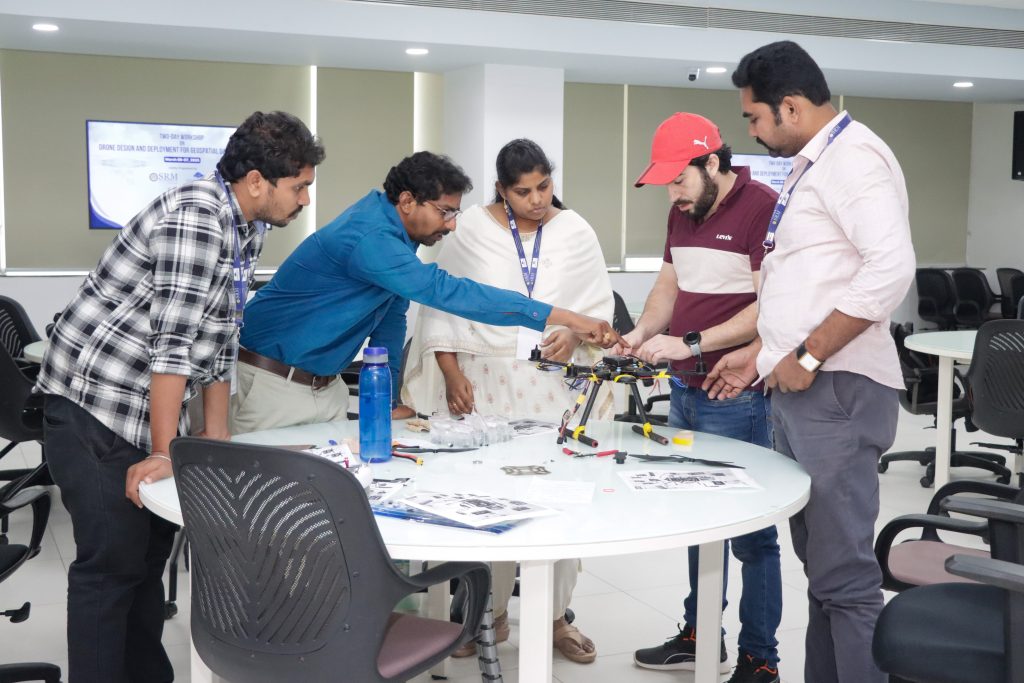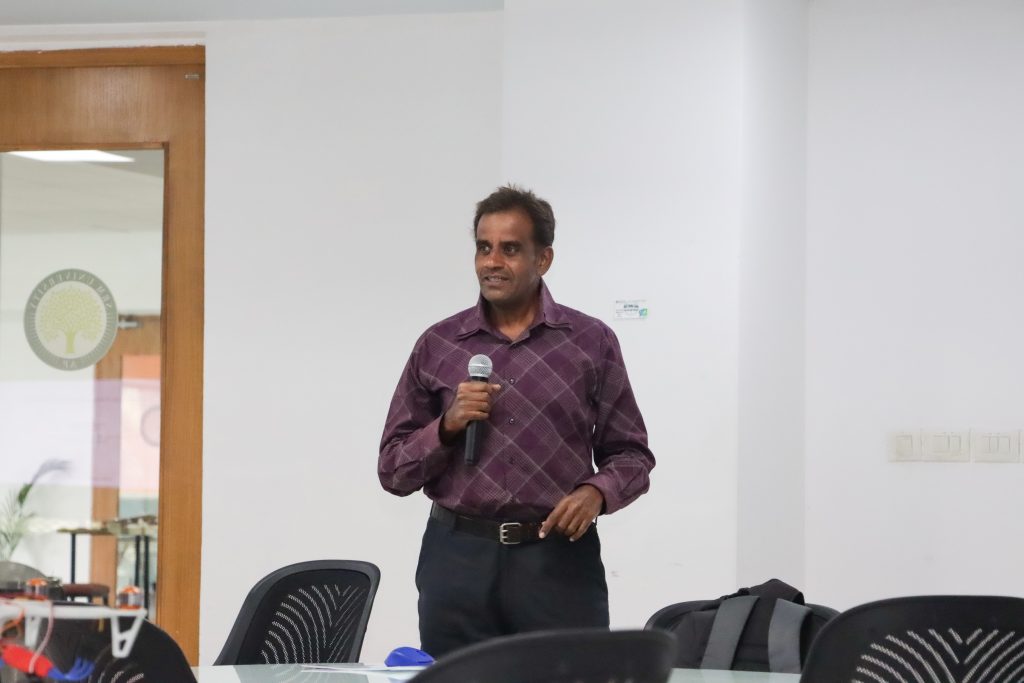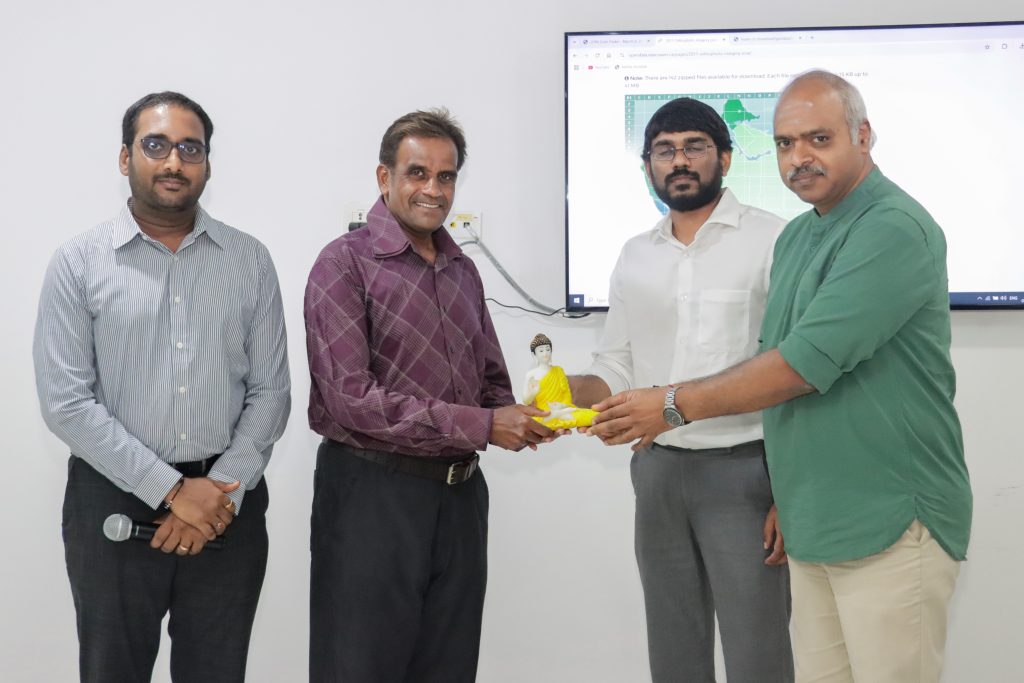Research on High-Performance Metal-Free Catalyst
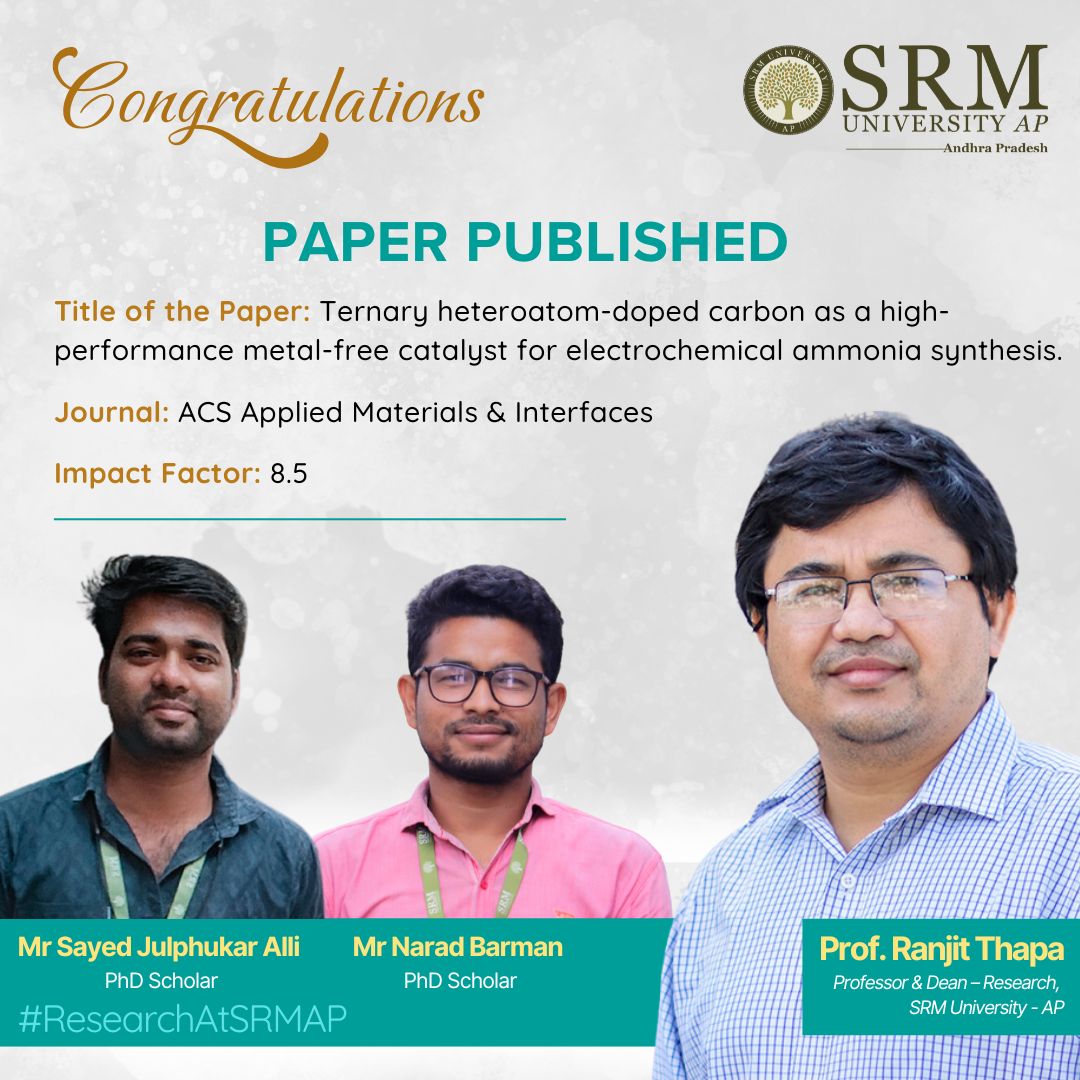 In the paper titled “Ternary Heteroatom-doped Carbon as a High-performance Metal-free Catalyst for Electrochemical Ammonia Synthesis.” by Prof. Ranjit Thapa and his research Scholars, a novel approach to enhance nitrogen reduction reactions (NRR) is explored. This research, published in ACS Applied Materials & Interfaces, investigates the potential of nitrogen-doped carbon materials further enhanced by the incorporation of boron and fluorine heteroatoms. The study reveals significant advancements in electrocatalytic performance, emphasising the importance of efficient and sustainable ammonia production.
In the paper titled “Ternary Heteroatom-doped Carbon as a High-performance Metal-free Catalyst for Electrochemical Ammonia Synthesis.” by Prof. Ranjit Thapa and his research Scholars, a novel approach to enhance nitrogen reduction reactions (NRR) is explored. This research, published in ACS Applied Materials & Interfaces, investigates the potential of nitrogen-doped carbon materials further enhanced by the incorporation of boron and fluorine heteroatoms. The study reveals significant advancements in electrocatalytic performance, emphasising the importance of efficient and sustainable ammonia production.
Abstract :
Electrochemical nitrogen reduction reaction (NRR) has garnered much attention, but the major challenge remains with efficient electrocatalysts. Metal-free carbonaceous materials, doped with heteroatoms and structural defects, present a promising alternative to metal-based catalysts. This study introduces a novel strategic stepwise synthesis strategy of defective nitrogen-doped carbon material, further doped with secondary heteroatoms boron and fluorine (FBDG). These secondary atoms in combination create additional active sites for nitrogen adsorption, activation and suppress the hydrogen evolution reaction (HER). The synergistic effect of three heteroatoms and induced defects in the catalyst enhances electron-donor behaviour, improving π bonding within the carbon framework and facilitating the electron transfer processes during NRR, resulting in a significantly high Faradaic efficiency of 38.1 % in the case of metal-free electrocatalysts. The theoretical calculation reveals that FBDG possesses sufficient charge density to reduce nitrogen at a low overpotential following an alternating free energy pathway. The reaction intermediates are thereby identified by in situ ATR-FTIR studies. For rapid screening of ammonia, we used a rotating ring disk system (RRDE) and did a kinetic study. The high efficiency, stability, and cost-effectiveness of FBDG position it as a strong contender for sustainable ammonia production and open up the way for future advancements in NRR.
Practical implementation:
The practical implementation of your research or the social implications associated with it.The FBDG catalyst achieved a remarkable Faradaic efficiency of 38.1 %. Theoretical studies confirmed that FBDG has a low overpotential, thereby increasing its appropriateness for NRR. The incorporation of fluorine and boron through co-doping in N-doped defective material enhances the N2 absorption energy, and from the charge density difference, we showed improved electron delivery from the host surface to the intermediate, which is essential for breaking the strong triple bond in N2 molecules, enhancing NRR. This work not only introduces a novel catalyst design strategy but also provides deep insights into the synergistic effects of heteroatom doping and defect engineering, paving the way for more efficient and sustainable ammonia production.
Collaborations
Dr Ramendra Sunder Dey, Assistant Professor (Scientist-D), INSA Associates, Institute of Nano Science and Technology, Mohali
- Published in Departmental News, News, Physics News, Research News
Research Paper on Efficient Resource Orchestration Algorithm
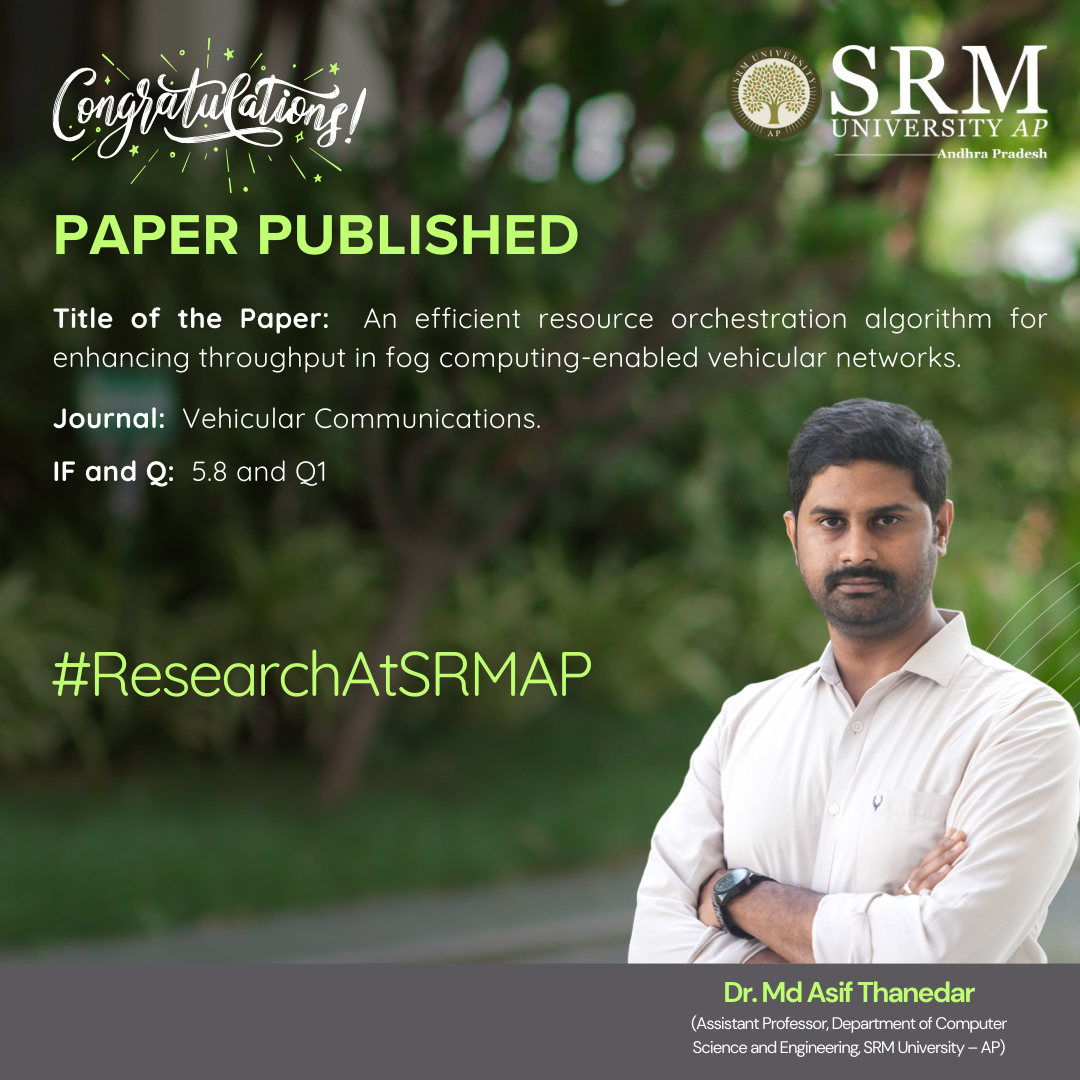 Dr Asif Thanedar, Assitant Professor at the Department of Computer Science and Engineering in research titled “An Efficient Resource Orchestration Algorithm for Enhancing Throughput in Fog Computing-enabled Vehicular Networks,” discusses issues faced by fog nodes (FNs) when serving connected vehicles during busy times. The research introduces an Efficient Resource Orchestration (ERO) algorithm designed to improve network performance by optimising resource use within the limits of FNs. The study aims to make a valuable contribution to the fields of vehicular fog computing and resource management.
Dr Asif Thanedar, Assitant Professor at the Department of Computer Science and Engineering in research titled “An Efficient Resource Orchestration Algorithm for Enhancing Throughput in Fog Computing-enabled Vehicular Networks,” discusses issues faced by fog nodes (FNs) when serving connected vehicles during busy times. The research introduces an Efficient Resource Orchestration (ERO) algorithm designed to improve network performance by optimising resource use within the limits of FNs. The study aims to make a valuable contribution to the fields of vehicular fog computing and resource management.
Abstract :
The intelligent vehicles are connected to the roadside infrastructure, such as high power nodes (HPNs) and roadside units (RSUs), also called fog nodes (FNs), for obtaining on-demand services. These FNs possess finite resources and can provide services to limited vehicles. However, when vehicles reach the network spike in demand, the FNs become impuissant in furnishing services in the existing solutions. As a result, there is a significant reduction in the network throughput. Therefore, we propose an efficient resource orchestration (ERO) algorithm to maximize the throughput by reducing the allocated resource blocks (RBs) of FNs.
Explanation in layperson’s terms:
The throughput is maximized by migrating allotted RBs of vehicles in non-restricted coverage regions such that the allotted RBs of these vehicles are minimized among pairs of FNs.
We formulated the RBs migration problem in FCVNs to an integer linear programming (ILP) by scrutinizing the variables influencing the network throughput and FNs resource constraints.
We propose an ERO algorithm, a polynomial time algorithm, which constructs the minimum priority queue for optimal RBs migration between pairs of FNs to augment the network’s throughput. The ERO algorithm synchronizes the RBs allocation for offloading upstream services such that throughput is maximized by partitioning the coverage of FNs into restricted and non-restricted coverage regions.
Practical implementation:
For practical implementation we consider the FNs are equipped with large batteries and deployed across the highway segments of remote areas (i.e., forests or hill terrain) with no consistent power supply. In this context, we present an efficient resource orchestration (ERO) algorithm for harmonizing RB allocation and offloading upstream services among FNs to maximize the network throughput during battery depletion.
Collaborations:
Dr Sanjaya Kumar Panda, Assistant Professor, Dept. of CSE, National Institute of Technology Warangal.
Future Research Plans:
Resource Provisioning in Fog environment.
Energy Efficiency in vehicular fog computing (VFC).
Multi-objective optimization in fog computing.
- Published in CSE NEWS, Departmental News, News
Dr Priyanka Singh and Students Collaborate on Innovative Approach of Image Retrieval
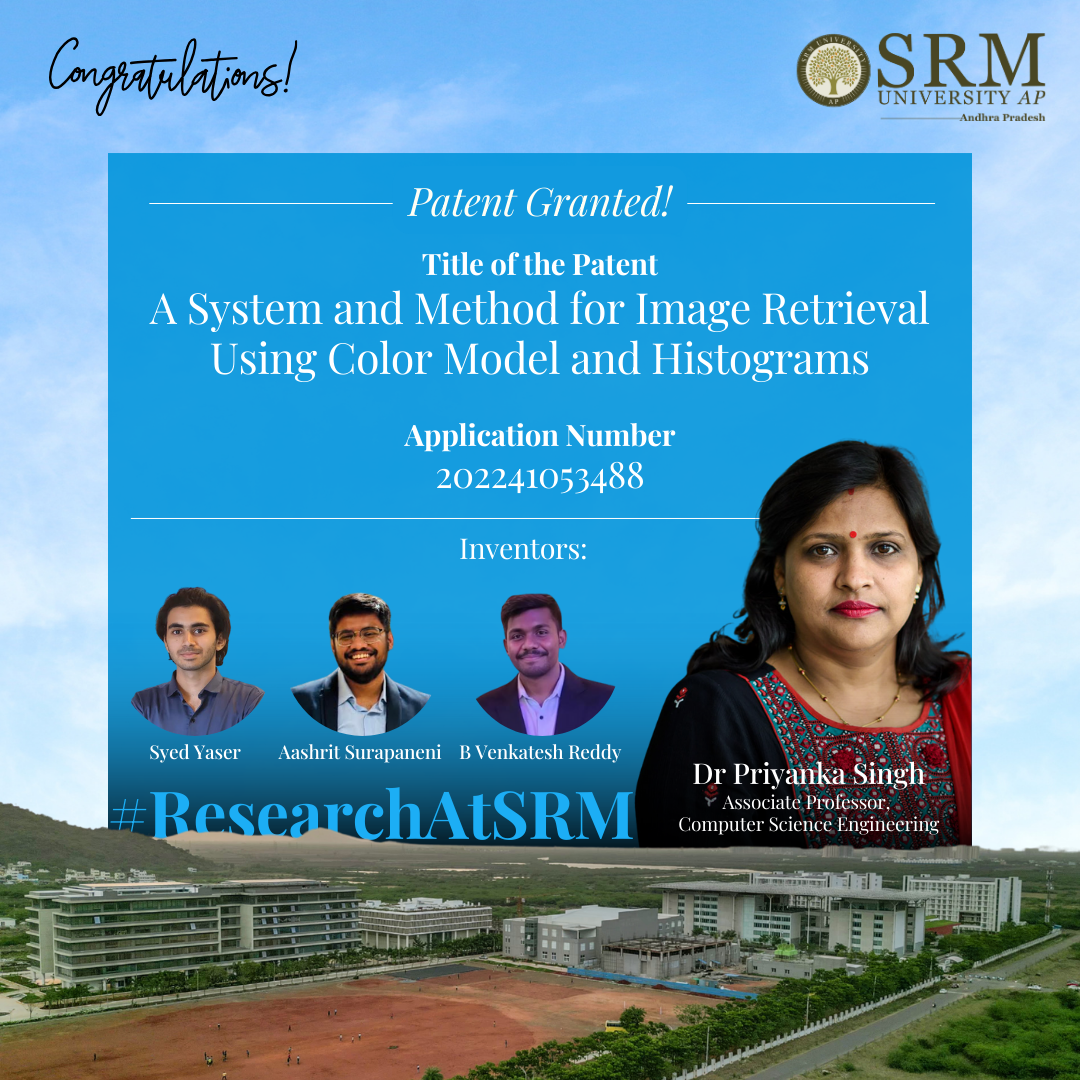 The patent titled “A System and Method for Image Retrieval Using Color Model and Histograms“, with application number 202241053488, presents a novel approach to image retrieval. Authored by Syed Yaser, Sai Aashrit Surapaneni, and B Venkatesh Reddy, with guidance from Dr Priyanka Singh, Associate Professor, Department of Computer Science and Engineering, this work explores the efficient and effective retrieval of images from large databases. The findings contribute significantly to advancements in various fields, including medical imaging and digital libraries.
The patent titled “A System and Method for Image Retrieval Using Color Model and Histograms“, with application number 202241053488, presents a novel approach to image retrieval. Authored by Syed Yaser, Sai Aashrit Surapaneni, and B Venkatesh Reddy, with guidance from Dr Priyanka Singh, Associate Professor, Department of Computer Science and Engineering, this work explores the efficient and effective retrieval of images from large databases. The findings contribute significantly to advancements in various fields, including medical imaging and digital libraries.
Abstract:
Content Based Image Retrieval; a widely researched area in the past few decades when it comes to image retrieval and searching images in a large database. The proposed scheme is based on Hue, Saturation, Value (HSV) components of an image and compares images by calculating the distance between histograms is used to implement CBIR using global and local comparison. Histogram of hue and saturation is generated for global comparison. The image in the database which has the minimum distance to our query image is the most similar image of all images. Which means when the distance is 0 the query image is the same as the target image which concludes the image retrieval process. The above algorithm has been completely implemented using python. Python was chosen because of its inbuilt libraries like cv2 for image processing, numpy for mathematical calculations and matplotlib for visualisation
Practical Implementation:
The system can be applied in various fields like medical imaging, digital libraries, surveillance, and e-commerce platforms where quick and accurate image search is necessary. It can also enhance accessibility tools for the visually impaired by recognising images based on content.
Collaborations:
This project was done with the support and guidance of professors and fellow students from the Department of Computer Science and Engineering at SRM University AP, Amaravati. The main team from SRM included:
Syed Yaser
Sai Aashrit Surapaneni
B Venkatesh Reddy
Dr Priyanka
Dr Naushad Varish from Koneru Lakshmaiah Education Foundation, Guntur, also made significant contributions to the work.
- Published in CSE NEWS, Departmental News, News, Research News
Gunvatta Yatra Awareness Programme on NABL Accreditation
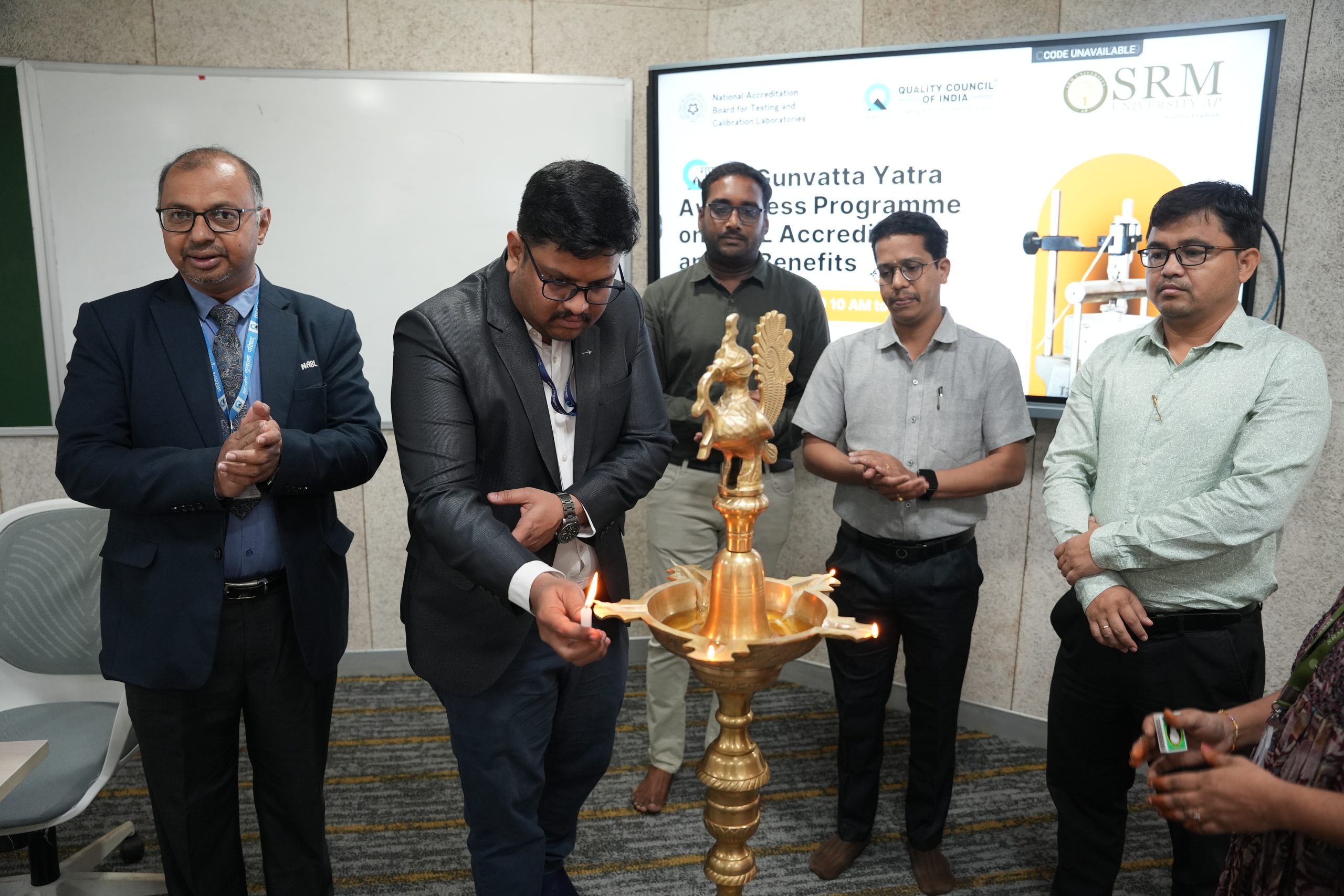 SRM University, Andhra Pradesh successfully hosted a significant one-day awareness workshop on NABL accreditation as part of the nationwide Gunvatta Yatra initiative. The event, organised by the Quality Council of India (QCI) and the National Accreditation Board for Testing and Calibration Laboratories (NABL), brought valuable knowledge about quality standards and accreditation processes directly to our campus.
SRM University, Andhra Pradesh successfully hosted a significant one-day awareness workshop on NABL accreditation as part of the nationwide Gunvatta Yatra initiative. The event, organised by the Quality Council of India (QCI) and the National Accreditation Board for Testing and Calibration Laboratories (NABL), brought valuable knowledge about quality standards and accreditation processes directly to our campus.
Gunvatta Yatra is an important programme, designed to elevate quality standards across healthcare, laboratories, and MSMEs throughout India’s Tier-2, Tier-3 cities and rural areas, focused specifically on NABL accreditation processes and benefits. The workshop began with an inauguration hosted by Dr Pranav from the Department of Civil Engineering. The event started with traditional lamp lighting by dignitaries from QCI Bangalore, the Dean of Research, and the HOD of Civil Engineering, followed by an invocation song that set a positive tone for the day’s proceedings.
Dr Ranjit Thapa, Dean of Research delivered the welcome address. He emphasised that despite being a young institution, SRM AP has established itself as a research-intensive university with substantial laboratory facilities and expressed his hope to continue this momentum in the future. He articulated the huge need for the research ecosystem in Andhra Pradesh, noting the requisite for expanded laboratory infrastructure, advanced equipment, and enhanced research support throughout the region.
Mr Srikanth R, Joint Director at NABL with an impressive 30 years of professional experience in quality assurance offered comprehensive insights into the purpose and importance of laboratory accreditation. He then explained how NABL effectively helps laboratories implement international standards and detailed the recent establishment of NABL’s regional office in Bangalore to better serve southern India. Mr Srikanth emphasised accreditation’s critical role as a tool for removing technical barriers in laboratory operations and shared the significant achievement of having 9,100 laboratories accredited across India under NABL’s rigorous standards.
Following this, MrbSreeram Pinnamaraju, Assistant Director at QCI/NABL, outlined the workshop’s comprehensive agenda covering accreditation courses, application procedures, benefits of becoming accredited, and pathways to becoming an accreditor. His said that the practical, process-oriented presentations would provide participants with actionable knowledge for implementing accreditation standards within their own institutions.
As part of the broader Gunvatta Yatra movement, this workshop marked a significant step in building quality awareness and institutional capacity across India. It also reinforced SRM AP’s unwavering commitment to promoting research excellence and adherence to quality standards.
- Published in CIVIL NEWS, Departmental News, News
SRM-ites Shine at the TechXcelerate Hackathon
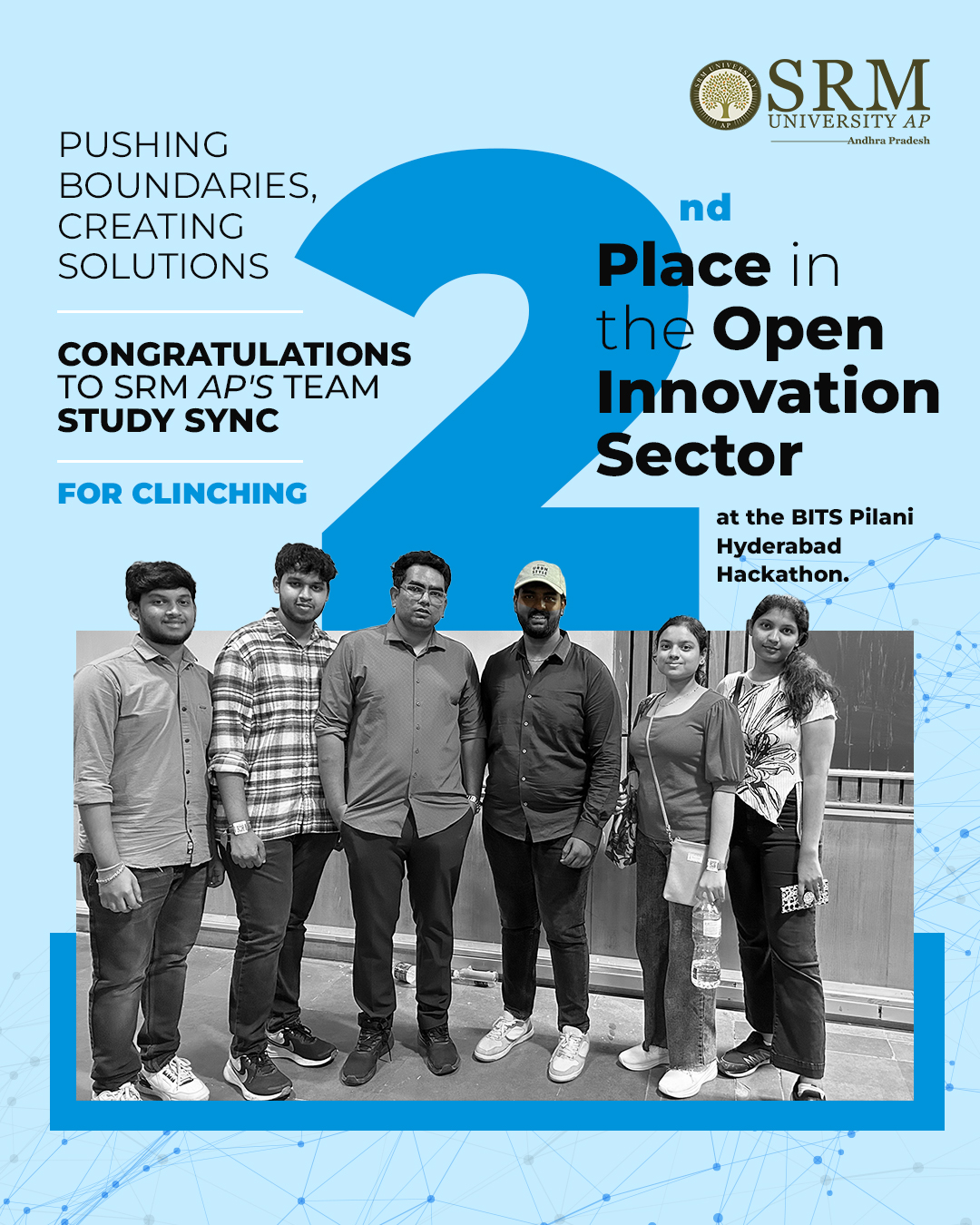 We are delighted to share the outstanding achievement of our students from the Department of Computer Science and Engineering, SRM University-AP, who have secured the Second Position in the prestigious TechXcelerate Hackathon conducted by BITS Pilani, Hyderabad Campus from March 22 to 24, 2025.
We are delighted to share the outstanding achievement of our students from the Department of Computer Science and Engineering, SRM University-AP, who have secured the Second Position in the prestigious TechXcelerate Hackathon conducted by BITS Pilani, Hyderabad Campus from March 22 to 24, 2025.
The winning team comprised five talented students from the Department of Computer Science and Engineering: G. Dhanush, K. Venkat, P Bhavya Sri, K Vaishnavi, and Jogith.
Competing in the Open Innovation Track of this national-level event, the team, StudySync, demonstrated exceptional creativity, technical expertise, and innovative problem-solving skills amidst participation from over 4000+ students and 829+ teams across India. The team also participated in the TechXcelerate Program, an innovation accelerator initiative, and was conferred the Hackathon Codebeta recognition by Barathversity.
The team developed StudySync, a next-generation collaborative productivity platform tailored for students. The platform enhances academic engagement through smart scheduling, intuitive task tracking, and interactive study rooms, creating an efficient learning environment.
This remarkable achievement is a testament to the innovative spirit and technical brilliance of our students. The university congratulates Team StudySync on their well-deserved success and wishes them the very best in their future endeavours.
- Published in CSE NEWS, Departmental News, News, Students Achievements
ECE Department Hosts Open House Day 2025
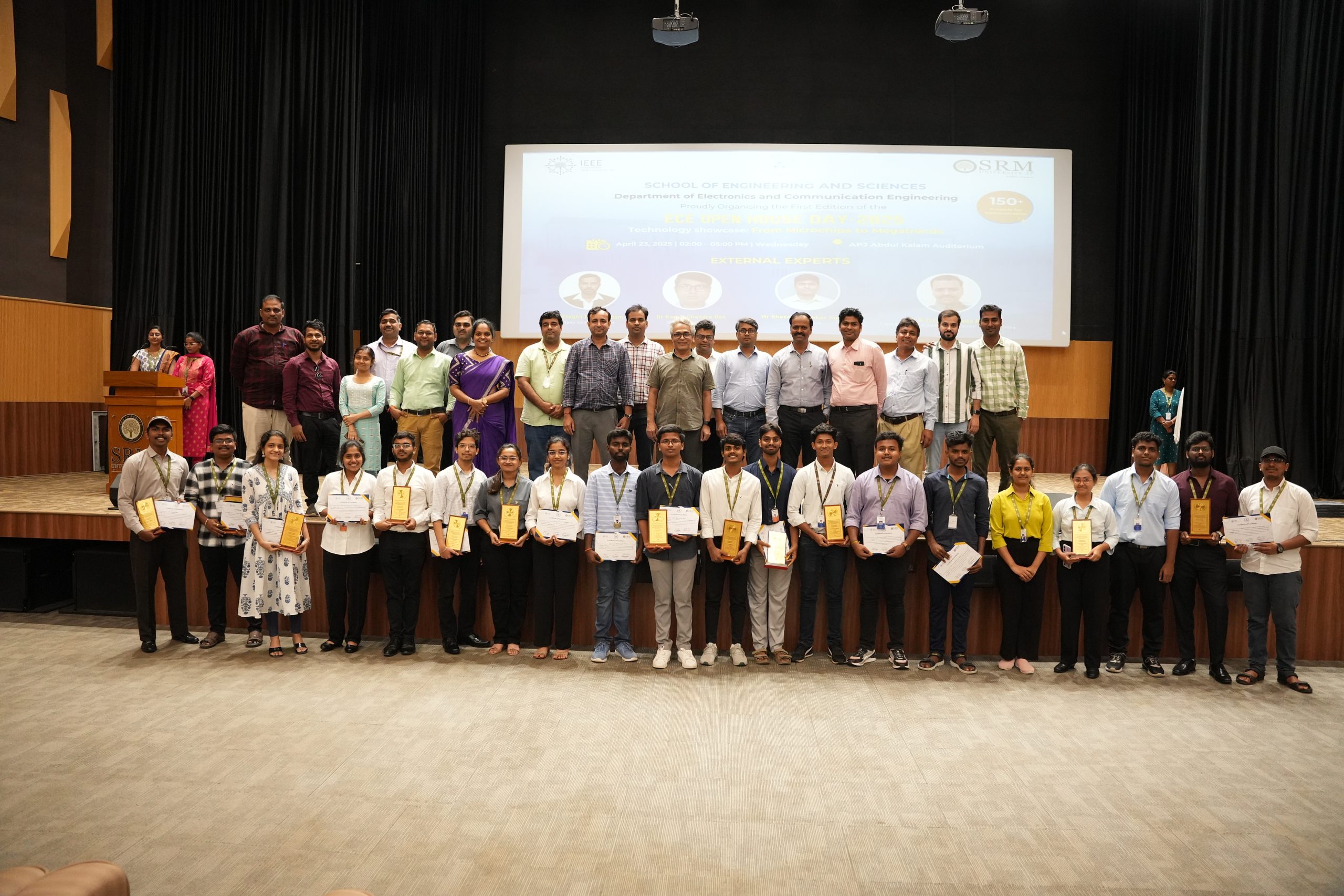 The Department of Electronics and Communication Engineering (ECE) organised “ECE Open House Day-2025: From Microchips to Megatrends,” the first edition of its flagship event. The Open House 2025 witnessed the presence of industry experts like Dr Rajkumar Elagiri Ramalingam, Mphasis; Dr Kamal Das, Senior Research Scientist & Technical Assistant to Director – IBM Research India; Mr Bhavani Shankar, Executive Manager & Head – IoT at Efftronics; Dr B Surya Prasada Rao, Chairman IETE Vijayawada, along with Pro Vice Chancellor, Prof. Ch. Satish Kumar; Registrar, Dr R Premkumar; Dean- SEAS, Prof. CV Tomy; Head & Associate Professor, Dr K A Sunitha; Event Convenor- Dr Goutam Rana; Co-convenors- Dr Arijit Datta, Dr Pradyut, Dr Saswat Kumar, other members of the faculty, staff and student community.
The Department of Electronics and Communication Engineering (ECE) organised “ECE Open House Day-2025: From Microchips to Megatrends,” the first edition of its flagship event. The Open House 2025 witnessed the presence of industry experts like Dr Rajkumar Elagiri Ramalingam, Mphasis; Dr Kamal Das, Senior Research Scientist & Technical Assistant to Director – IBM Research India; Mr Bhavani Shankar, Executive Manager & Head – IoT at Efftronics; Dr B Surya Prasada Rao, Chairman IETE Vijayawada, along with Pro Vice Chancellor, Prof. Ch. Satish Kumar; Registrar, Dr R Premkumar; Dean- SEAS, Prof. CV Tomy; Head & Associate Professor, Dr K A Sunitha; Event Convenor- Dr Goutam Rana; Co-convenors- Dr Arijit Datta, Dr Pradyut, Dr Saswat Kumar, other members of the faculty, staff and student community.
The event featured over 150 groundbreaking student projects developed as part of Capstone, UROP, and M.Tech tracks under the mentorship of ECE faculty at the varsity. Apart from the students from the varsity, the event saw the participation of students from the local schools and colleges, aiming to inspire their technical and innovative acumen.
The Open House 2025 presented projects across various cutting-edge domains, including VLSI, Embedded Systems & IoT, Biomedical Signal Processing, RF & Antenna Design and Communication Engineering. Among the 150+ projects presented, the judges recognised the top twelve for their outstanding innovation and creativity.
Pujari Sri Sai Manikanta and Ajit Kumar received accolades under the Embedded and IoT Track for their project on Autonomous Drone Delivery. Darapureddy Divya Deekshitha was honoured in the Robotics and Bionics category of the Biomedical and Signal Processing Track for her exemplary work. From the VLSI Track, Dhanesh Kumar Jallepalli earned recognition for his software project titled Exploring Logic Locking Techniques: The SAIL Attack. Shaik Shaista Zabeen excelled in the Communication and Networks Track with his project, O-RAN with AIML. Venkata Ramana Murthy Pondala stood out in the RF and Antenna Track for his work on Reconstruction of SPARS SAR System mmWave Radar Images.
In the Capstone Project category, P Mahesh, N Boobalan, V Harsha, and M Stephen Daniel made a significant impact. Bhuvan Chand Guntuku and Sai Meghana Unguturi excelled in the Biomedical and Signal Processing Tracks. In the VLSI, Communication and Networks, and RF and Antenna Tracks, students Amrit Kumar Singha, Arnov Paul, Meera C, Kamalnath S, Hamshini T K, and Sri Sankeerth Dhanekula also made their mark. Lastly, Bandi Raja Babu and A Trilochan Kumar were awarded in the MTech VLSI and IoT Tracks, respectively, highlighting their remarkable contributions to the field.
The winners were decided based on the problem-solving, sustainability and innovative technological contributions of their project. Events of this calibre do not just test the students’ learning but also test their dexterity and innovation skills, carving a legacy of excellence.
- Published in Departmental News, ECE NEWS, News
Dr Mrinmoy Pramanick’s Guest Talk on Bengali Dalit Literature
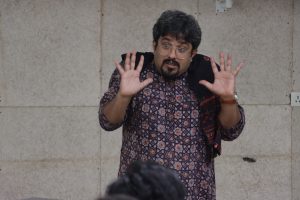 The Department of Literature and Languages at SRM University-AP organised a thought-provoking guest talk titled “Caste of Partition: Understanding Bengali Dalit Literature” on April 02, 2025. The event featured Dr Mrinmoy Pramanick, a distinguished scholar, Sahitya Akademi Award winner (2023), and Assistant Professor at the Department of Comparative Indian Language and Literature, University of Calcutta.
The Department of Literature and Languages at SRM University-AP organised a thought-provoking guest talk titled “Caste of Partition: Understanding Bengali Dalit Literature” on April 02, 2025. The event featured Dr Mrinmoy Pramanick, a distinguished scholar, Sahitya Akademi Award winner (2023), and Assistant Professor at the Department of Comparative Indian Language and Literature, University of Calcutta.
Dr Pramanick delivered an insightful lecture examining the complex relationship between caste, Partition, and Bengali Dalit literature. He quoted the historical trajectory of Partition, the Bangladesh Liberation War of 1971, which had a profound impact on Bengali Dalits, who faced displacement and marginalisation. He highlighted how Dalit experiences of Partition differ significantly from mainstream narratives. In his own words, “Dalit literature gave a new dimension to Bengali Partition History.”
The lecture also explored the representation of Partition in Bengali Dalit literature, focusing on notable works such as Sroter Sange by Narayan Gangopadhyay, Kundika by Samaresh Doshu, and Sokal Belar Alo by Shankar Mahadevan. Dr Pramanick emphasised how these literary works illuminate the challenges faced by Dalit refugees, including economic struggles, social discrimination, and identity crises. He also examined the influence of Ambedkarite ideologies in Bengali literature, especially in educational reforms, the establishment of institutions bearing Ambedkar’s name, and the translation and publication of his writings in Bengali. Dr Pramanick’s discussion underscored the transformative power of Dalit literature, stating, “It made history inclusive and for all.”
The session concluded with a highly engaging Q&A segment, where students, faculty members, and researchers actively participated. The discussion covered the role of caste consciousness in literary narratives, the socio-political impact of migration, gender roles, and the integration of Dalit literature into contemporary academia. Dr Pramanick’s responses offered deeper insights into marginalised perspectives on Partition and the significance of inclusive historical discourse.
Dr Mrinmoy Pramanick’s guest lecture was an intellectually enriching experience that provided a new perspective on the study of Partition through the lens of Bengali Dalit literature. The event successfully fulfilled its objective of fostering academic dialogue and promoting critical engagement with the socio-cultural dimensions of Partition and caste.
- Published in Departmental News, English news, News
Exploring the Role of Intellectual Property in Entrepreneurship
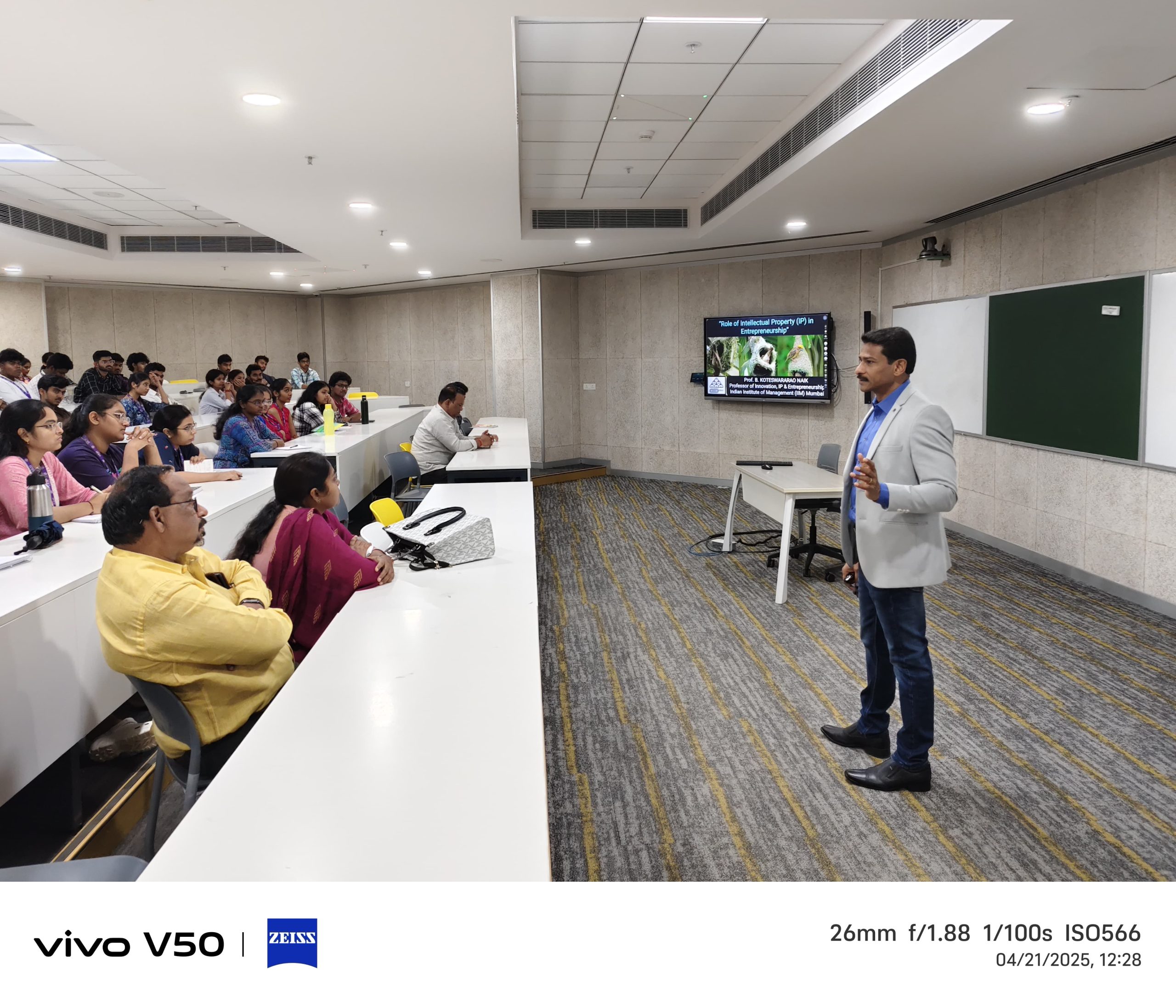 A workshop titled “The Role of Intellectual Property in Entrepreneurship” organised by the Department of Management under the Paari School of Business was held at varsity on April 21, 2025. The speaker, Prof. B Koteswararao Naik, a Professor at the Indian Institute of Management (IIM), Mumbai, shared his insights on intellectual property and its importance.
A workshop titled “The Role of Intellectual Property in Entrepreneurship” organised by the Department of Management under the Paari School of Business was held at varsity on April 21, 2025. The speaker, Prof. B Koteswararao Naik, a Professor at the Indian Institute of Management (IIM), Mumbai, shared his insights on intellectual property and its importance.
Prof. Naik commenced the workshop by discussing the importance of thinking of novel ideas and their potential to lead to successful start-ups. He guided participants on the steps essential to convert their ideas into patentable innovations, conveying the differences between invention and innovation. Moreover, Prof. Naik defined the different steps that are involved in the process of invention, like Idea, originality, identity, imagination, vision, necessity, and opportunity. This not only provided participants with a road map to invention but also encouraged them to think and create something out of the box.
Intellectual Property Management (IPM) was discussed as an important function for any entrepreneur. Prof. Naik introduced the students to the different aspects of IPM and its three key pillars: Create, Protect, and Leverage. He went on to encourage students by focusing on the benefits of IPM, such as attracting investors, protecting their Idea, and differentiating themselves from the present market.
The workshop acted as guidance for all those who aspire to make their mark with innovative ideas. The session concluded with an interactive discussion among the students and Prof. Naik, whose valuable insights inspired all the participants.
- Published in Departmental News, News
Exploring the Role of Intellectual Property in Entrepreneurship
 A workshop titled “The Role of Intellectual Property in Entrepreneurship” organised by the Department of Management under the Paari School of Business was held at varsity on April 21, 2025. The speaker, Prof. B Koteswararao Naik, a Professor at the Indian Institute of Management (IIM), Mumbai, shared his insights on intellectual property and its importance.
A workshop titled “The Role of Intellectual Property in Entrepreneurship” organised by the Department of Management under the Paari School of Business was held at varsity on April 21, 2025. The speaker, Prof. B Koteswararao Naik, a Professor at the Indian Institute of Management (IIM), Mumbai, shared his insights on intellectual property and its importance.
Prof. Naik commenced the workshop by discussing the importance of thinking of novel ideas and their potential to lead to successful start-ups. He guided participants on the steps essential to convert their ideas into patentable innovations, conveying the differences between invention and innovation. Moreover, Prof. Naik defined the different steps that are involved in the process of invention, like Idea, originality, identity, imagination, vision, necessity, and opportunity. This not only provided participants with a road map to invention but also encouraged them to think and create something out of the box.
Intellectual Property Management (IPM) was discussed as an important function for any entrepreneur. Prof. Naik introduced the students to the different aspects of IPM and its three key pillars: Create, Protect, and Leverage. He went on to encourage students by focusing on the benefits of IPM, such as attracting investors, protecting their Idea, and differentiating themselves from the present market.
The workshop acted as guidance for all those who aspire to make their mark with innovative ideas. The session concluded with an interactive discussion among the students and Prof. Naik, whose valuable insights inspired all the participants.
- Published in Departmental News, News, Paari Current Happenings
Two-Day Bootcamp on Drone Technology
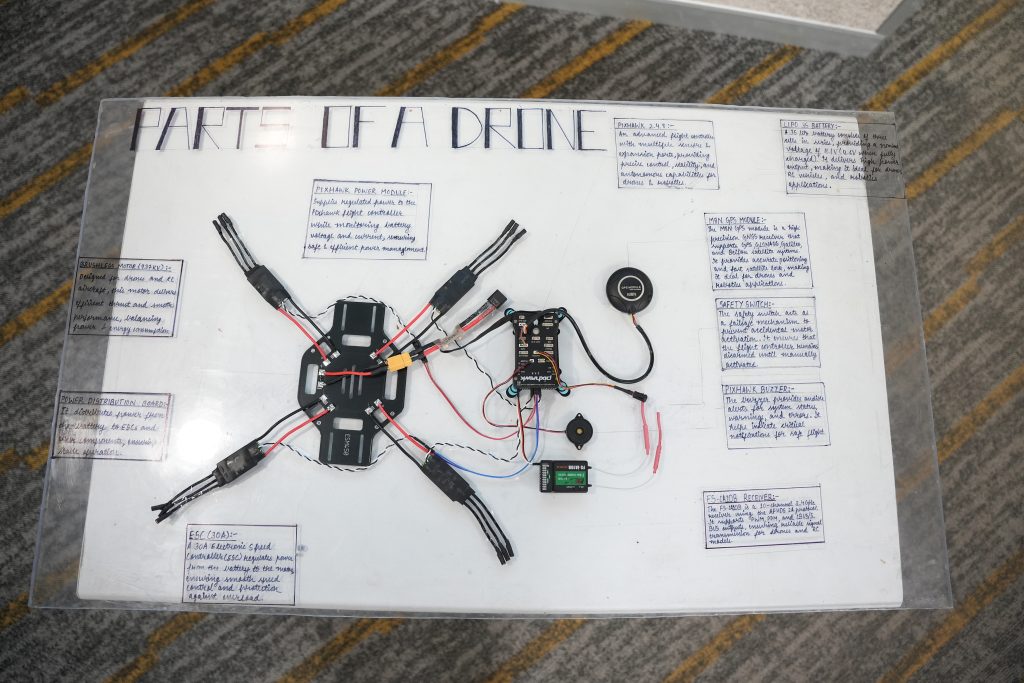
The Department of Civil Engineering and the Centre for Drone Technology at SRM University-AP, in collaboration with IIIT Hyderabad, organised an immersive 2-day workshop on “Drone Design, Deployment, and Applications”. The workshop began with a deep dive into Geospatial Data, Remote Sensing, and GIS, followed by expert talks from Prof. Rama Chandra Prasad (IIIT Hyderabad), Dr Sundar (Vice Chairman, APSAC), and industry leaders from Skyeris Aerotech and VYOMIK Drones.
A thought-provoking panel discussion explored the adoption of drone technology and the challenges faced across academic, industrial, and policy domains. Participants then engaged with teaching aids developed by SRM AP’s Centre for Drone Technology, gaining a hands-on understanding of quadcopter components.
Day 2 was all action! Participants built drones from scratch, configured firmware, and took their creations to the field for real-world flying experience. The advanced session, led by Dr Pranav RT Peddinti (Centre for Drone Tech), Dr Harish Puppala (Centre for Geospatial Technology), and Mr Pruthiv and Mr Manjunath (Skyeris Aerotech), showcased high-end drones with multispectral and thermal sensors—bridging theory with cutting-edge practice.
- Published in CIVIL NEWS, Departmental News, News


